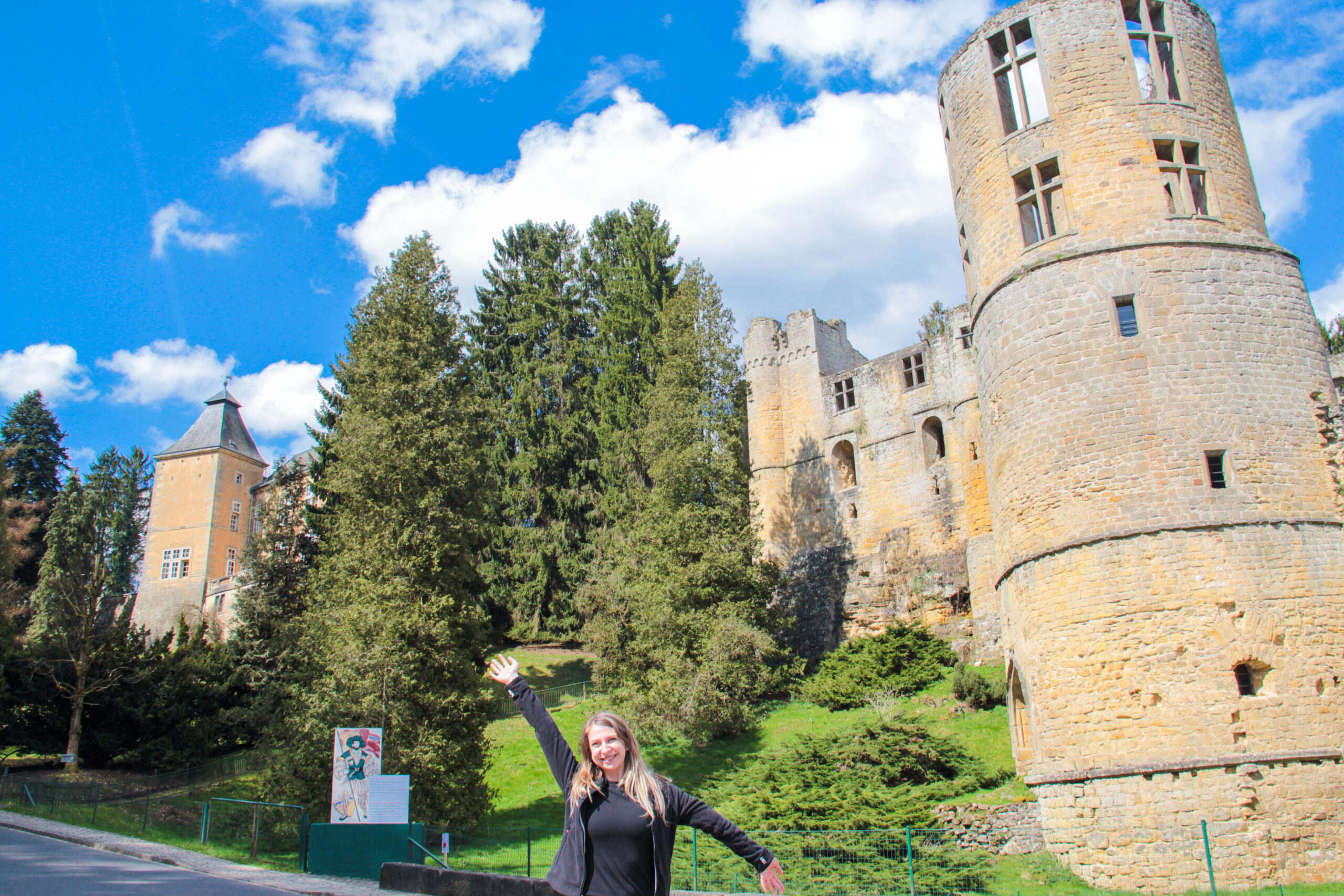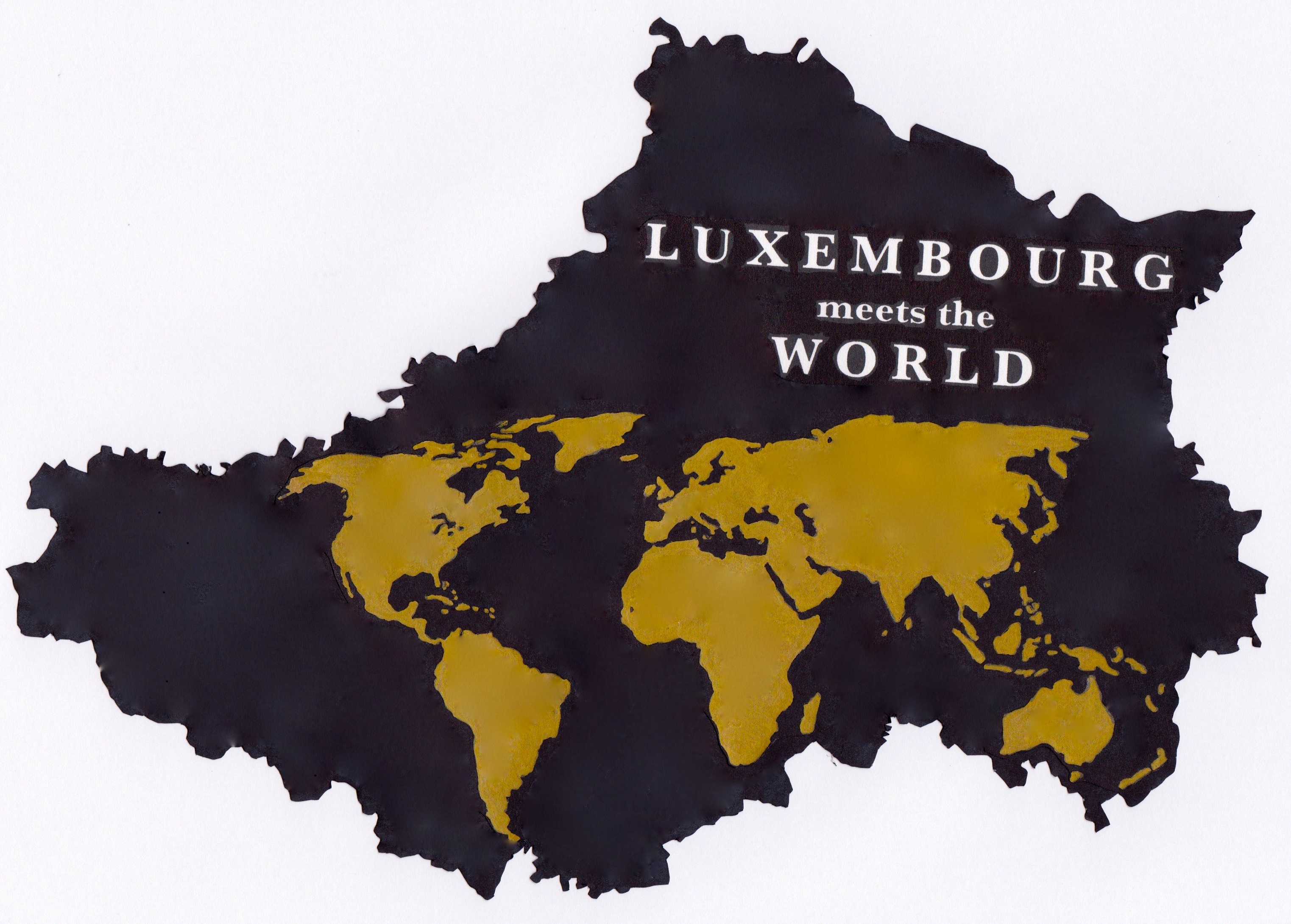
Beaufort Castle in Luxembourg

In the eastern part of Luxembourg, In the beautiful countryside of Beaufort, you can even find two different castles. On the one hand, there are the ruins of the old medieval castle and on the other hand an impressive renaissance castle. Both of them have their own charm and are reflecting the relative charm of their epoch.
Medieval Castle Beaufort
Let’s start with the medieval castle in Beaufort. As most of the castles, this one was also built in three different phases. In the past, the medieval castle was a water castle. A reference from 1192 indicated that Wauthier de Wiltz et Beaufort was the first lord of the castle.
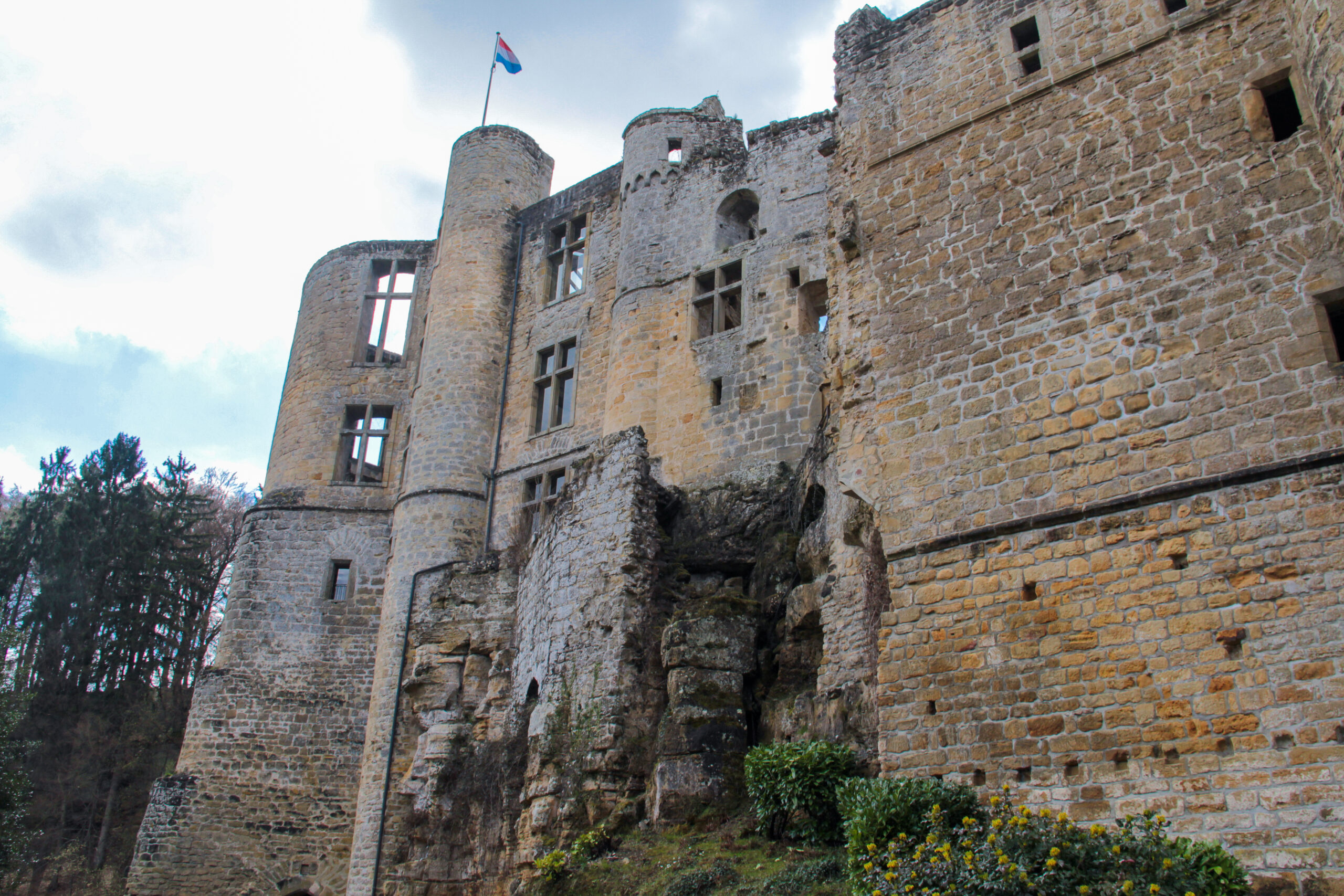
The most ancient part of the castle in Beaufort was built in 1150 and it was surrounded by curtain walls. Then in 1380, the castle was extended and the entrance was put near to the fountain of the castle. Besides this, the water tower was built. Finally in 1500, the part with the high renaissance windows were built.
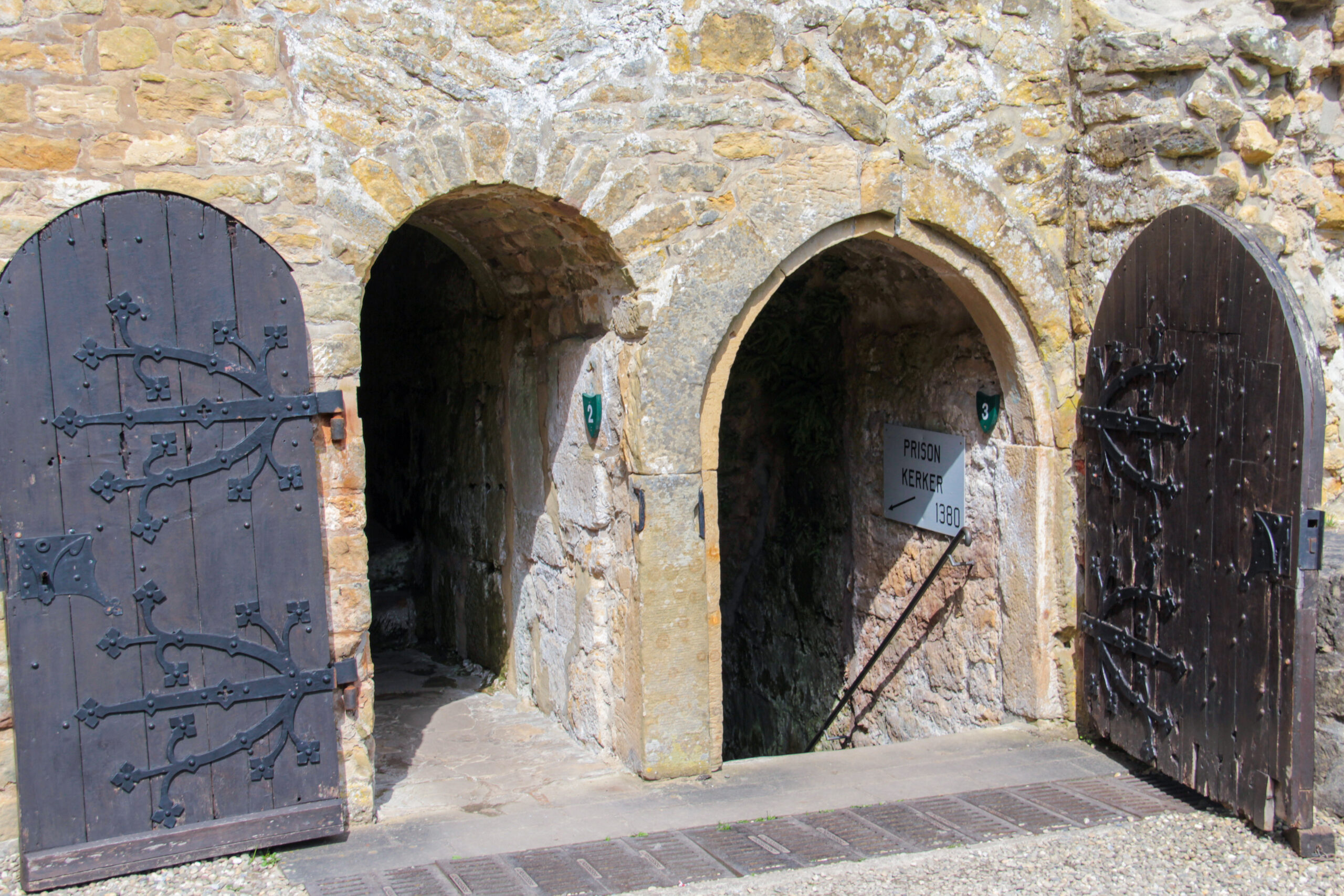
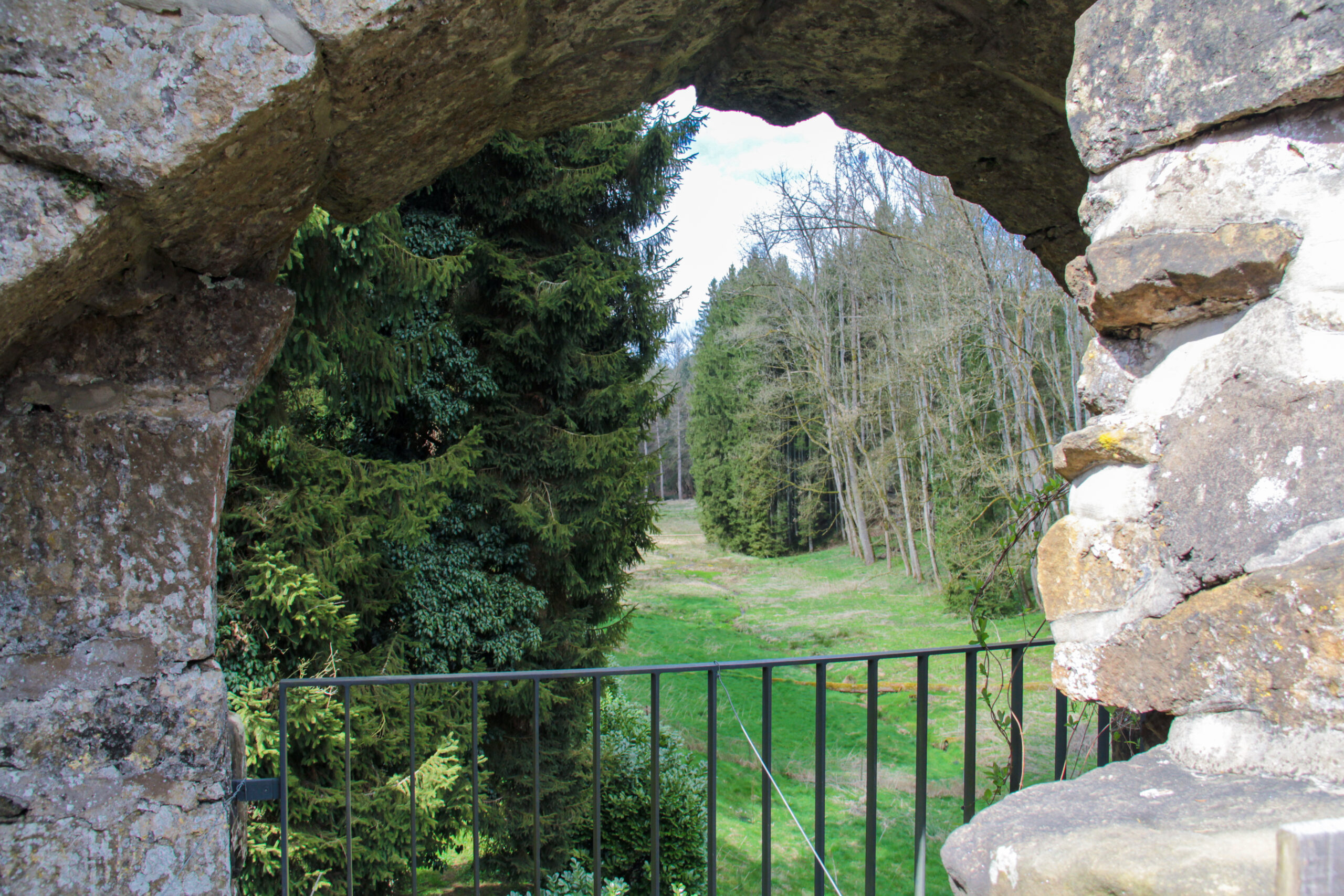
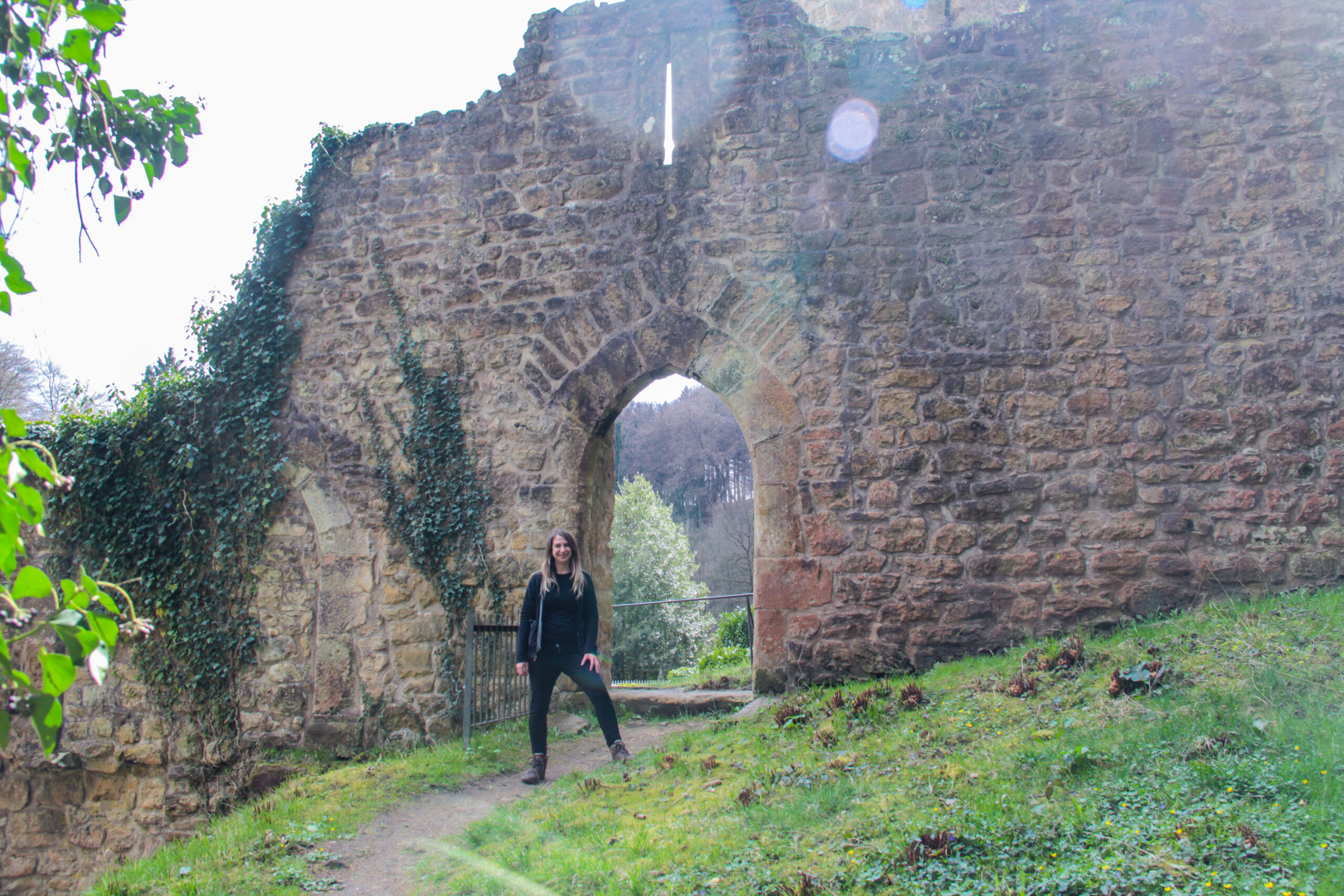
Nowadays, the water tower is not as high as it was in the past. Underneath the tower was a dungeon for solitary imprisonment. Today, the curtain wall is also only a ruin, but it shows definitely how it was at that time.
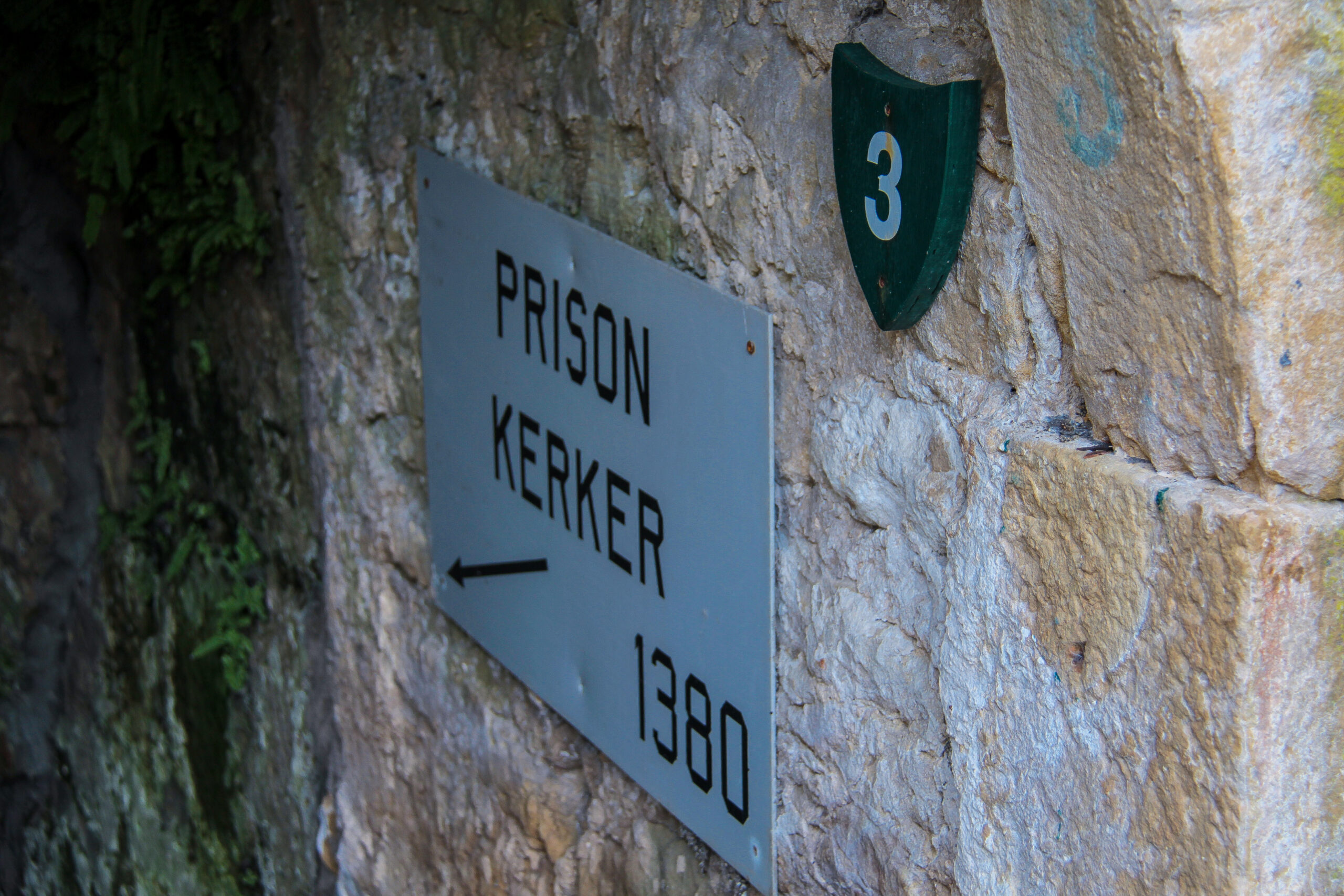
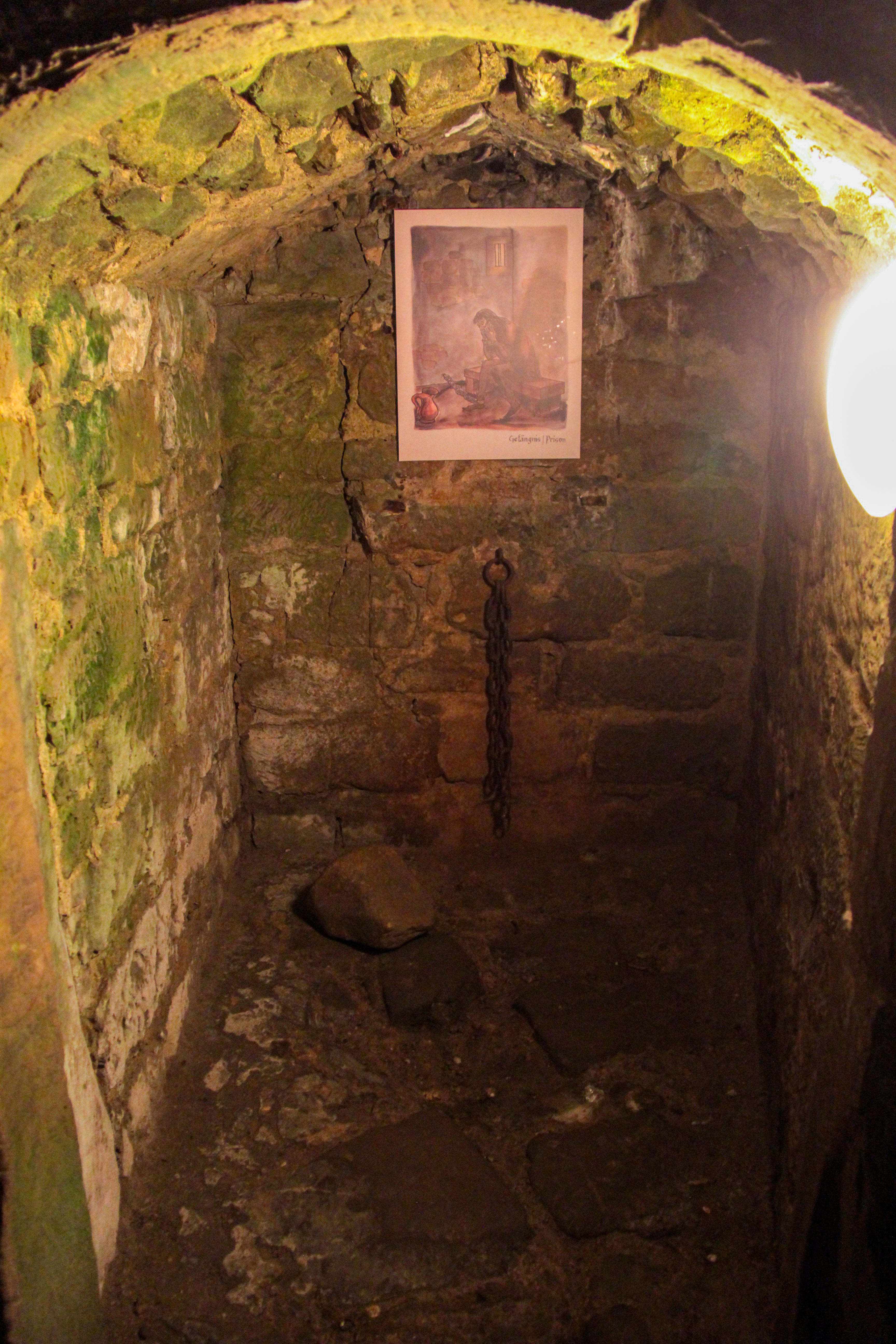
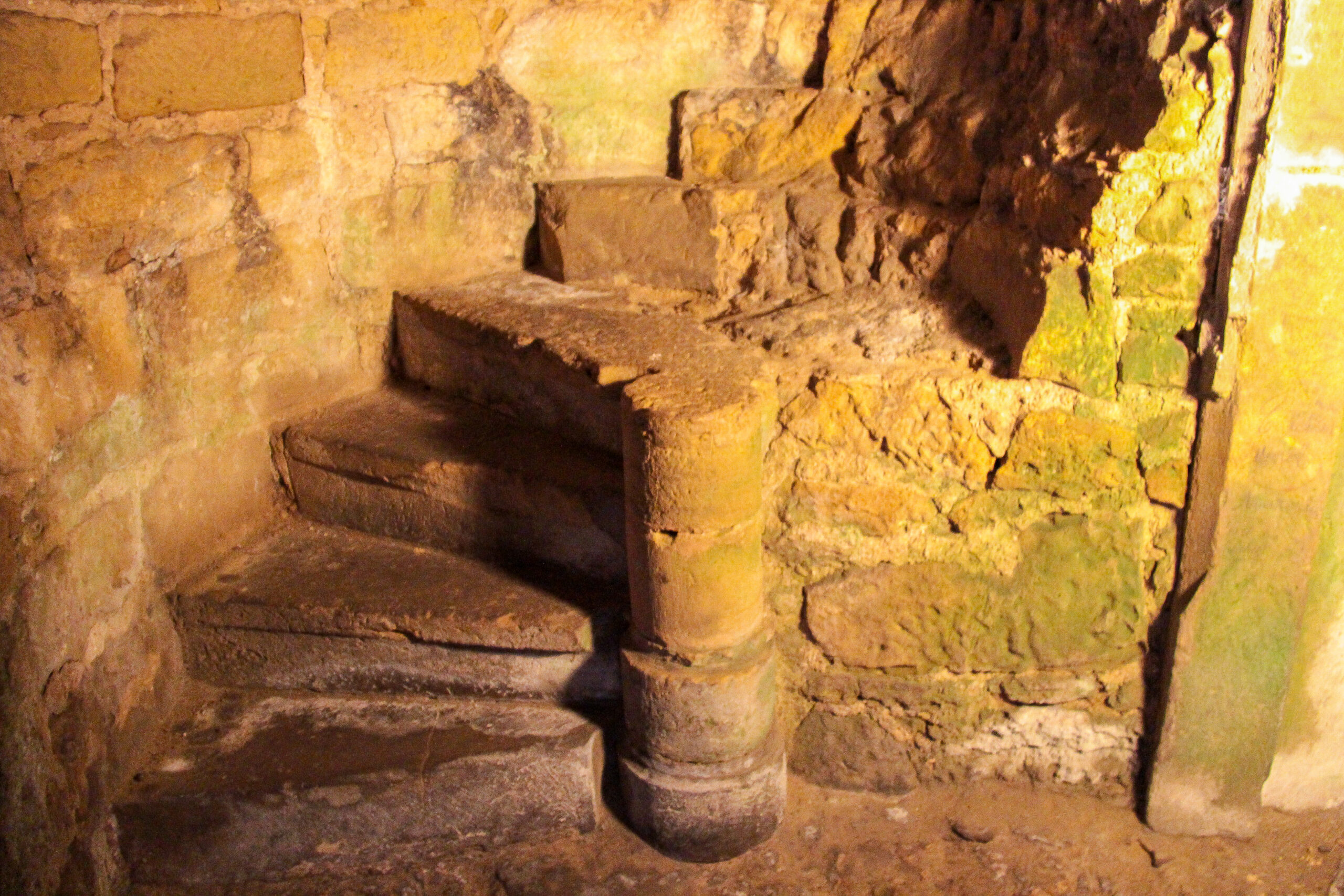
Everywhere in the ruins, you can see the machicolation, where the hot pitch was poured on the trespasser. Behind the entrance, there is the fountain of the castle, which was really important for the people to have their own access to water.
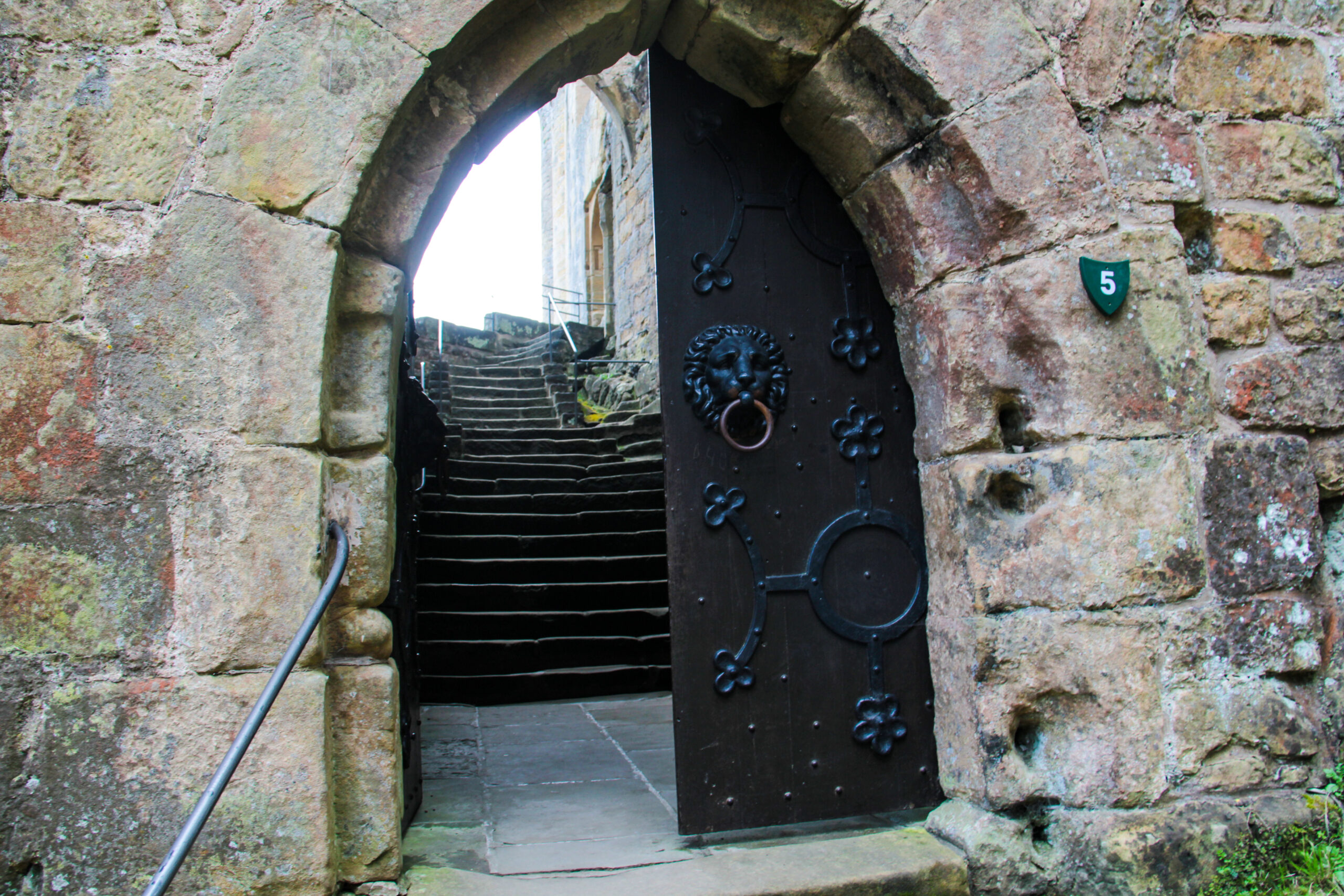
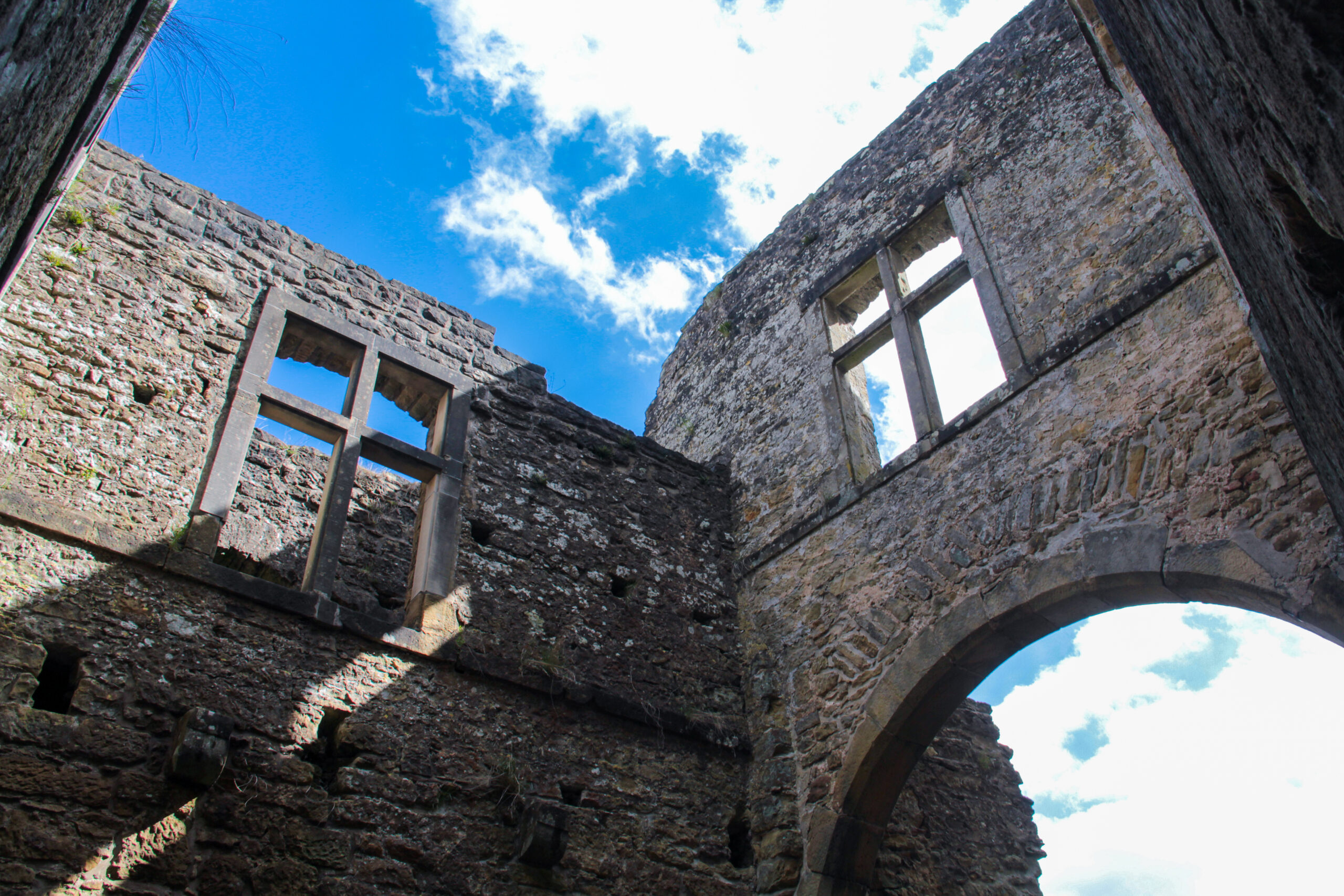
You can guess that there were rooms, but only the ruins remained. I really love to imagine how everything was at that time where the ruins were still a beautiful castle. You can see the rests of a chimney or of old windows etc. I have to say that I prefer to visit old ruins as intact castles.
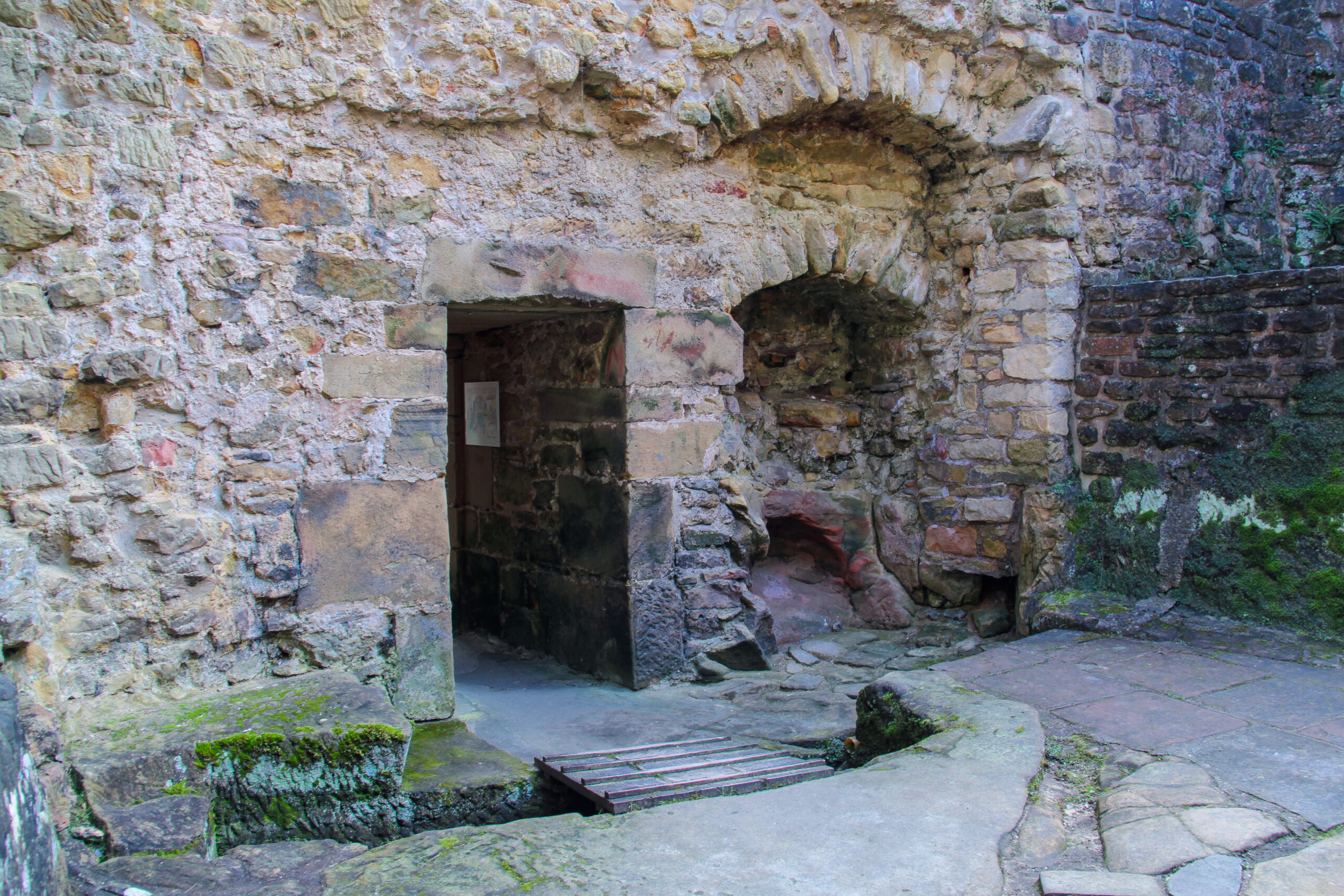
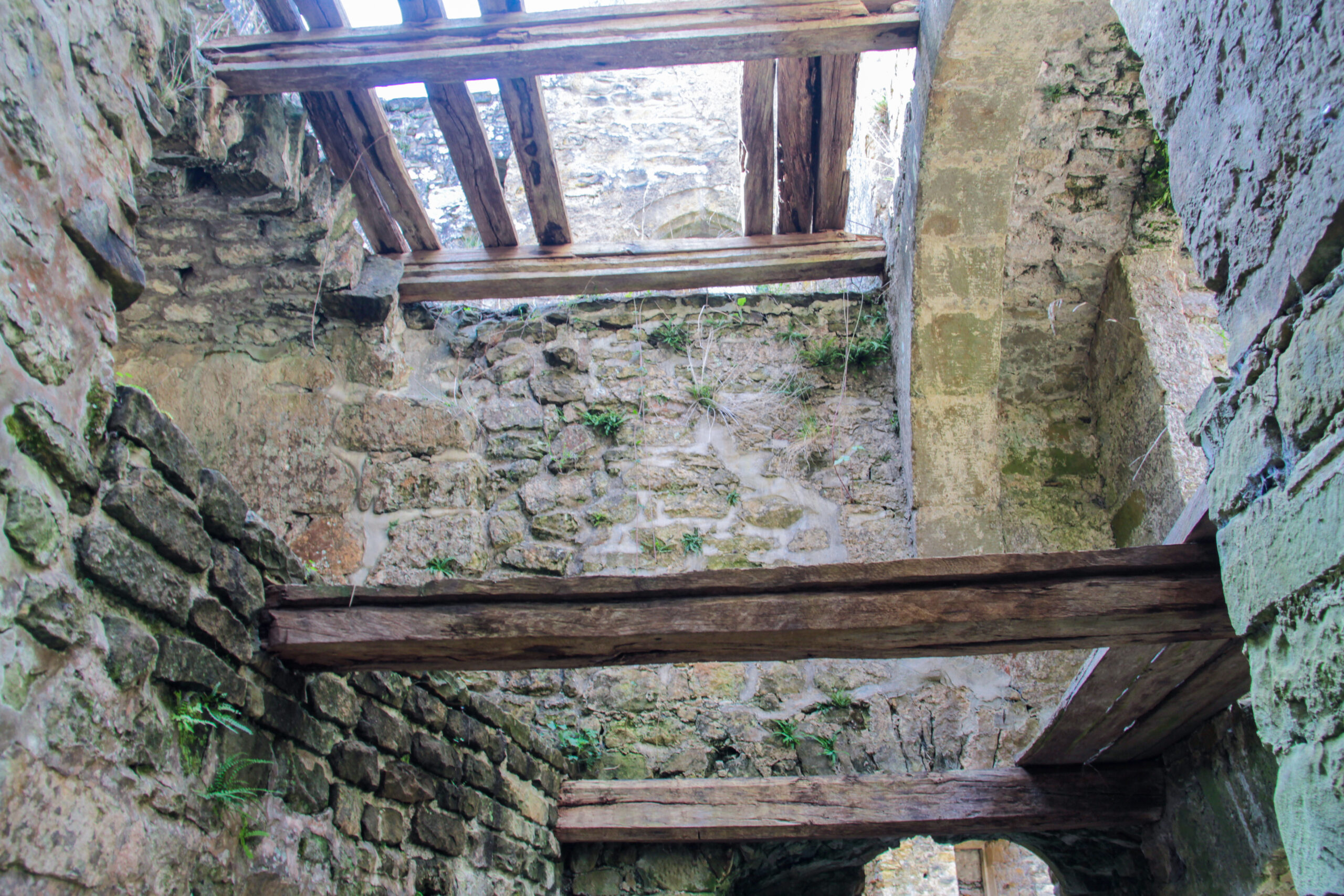
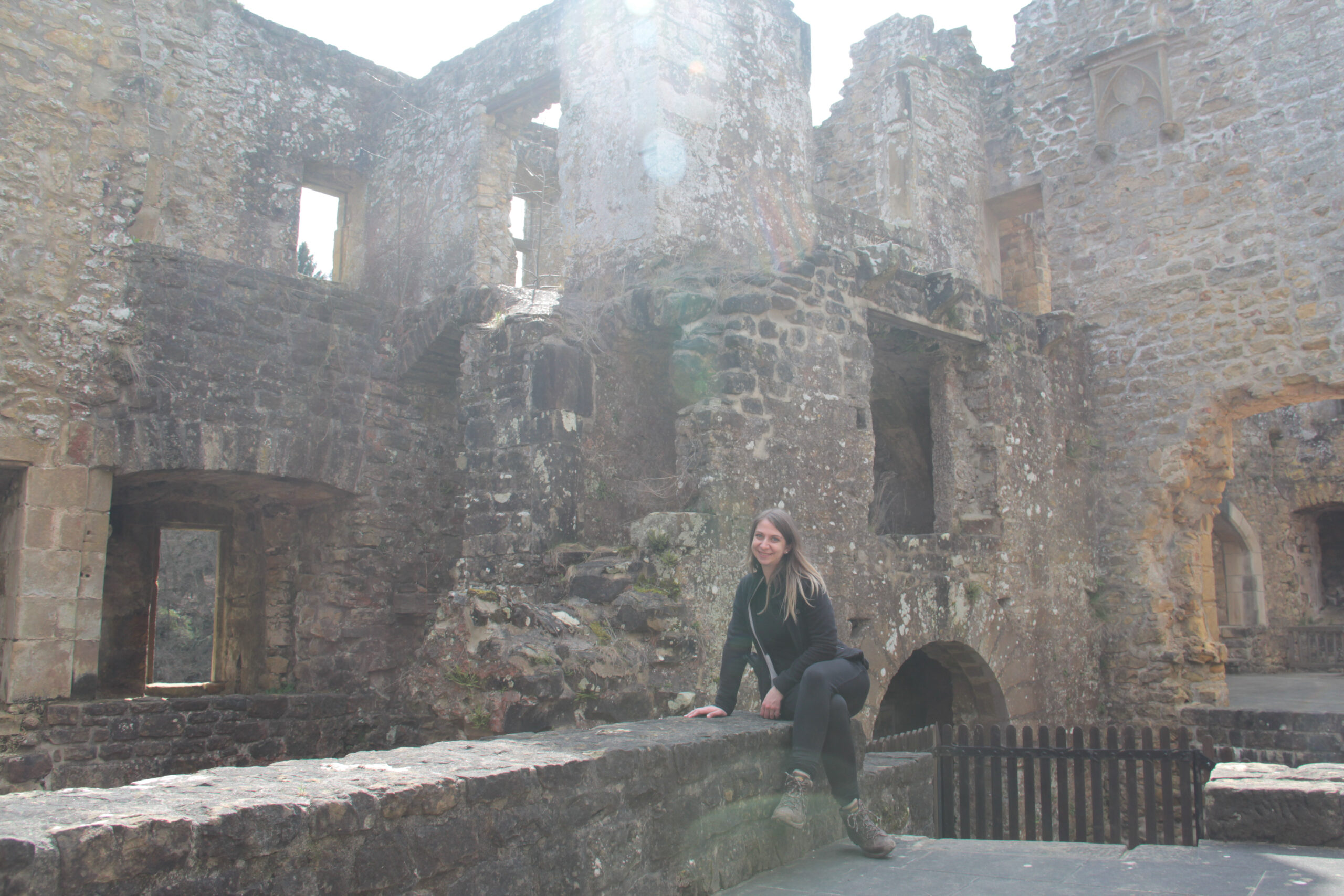
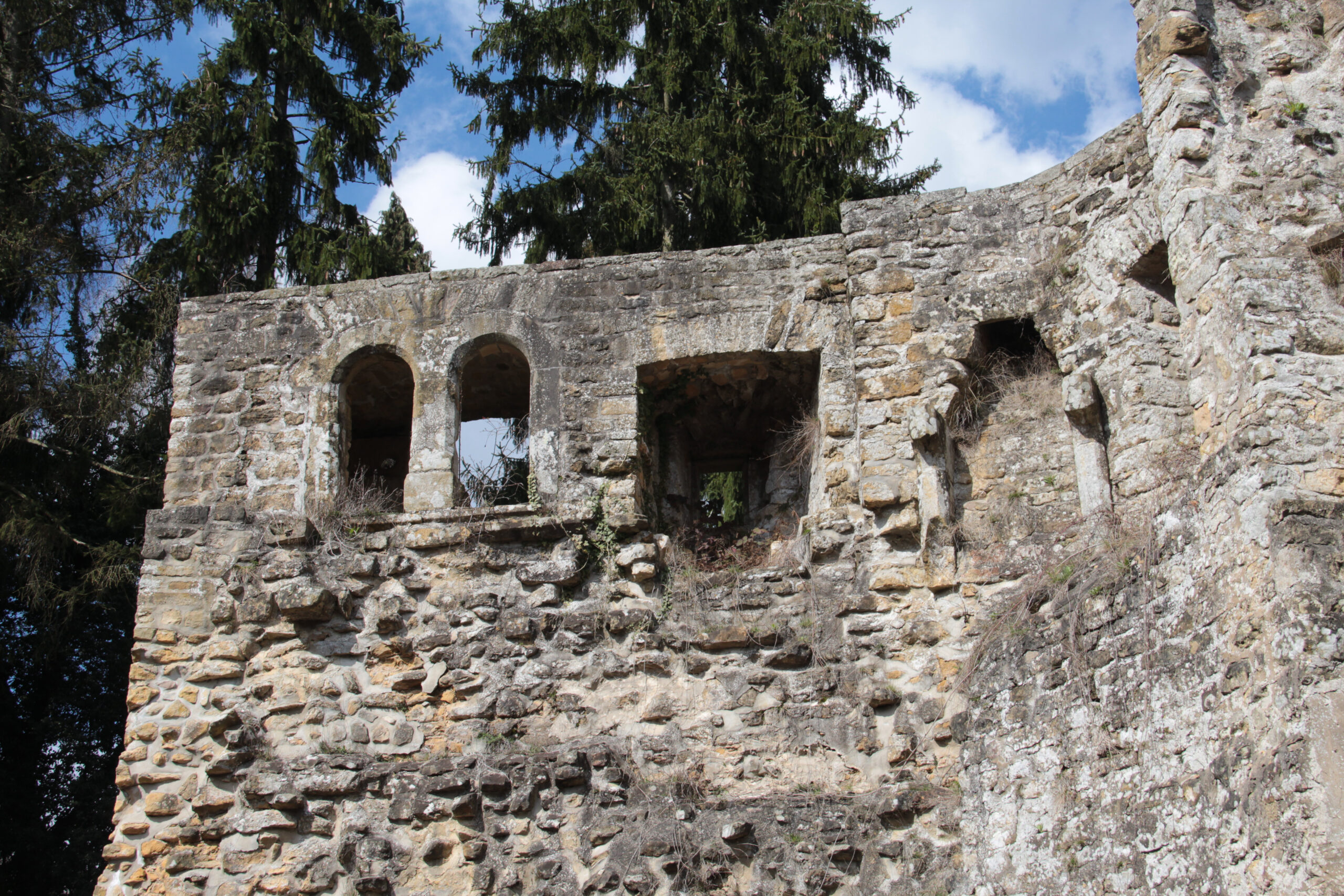
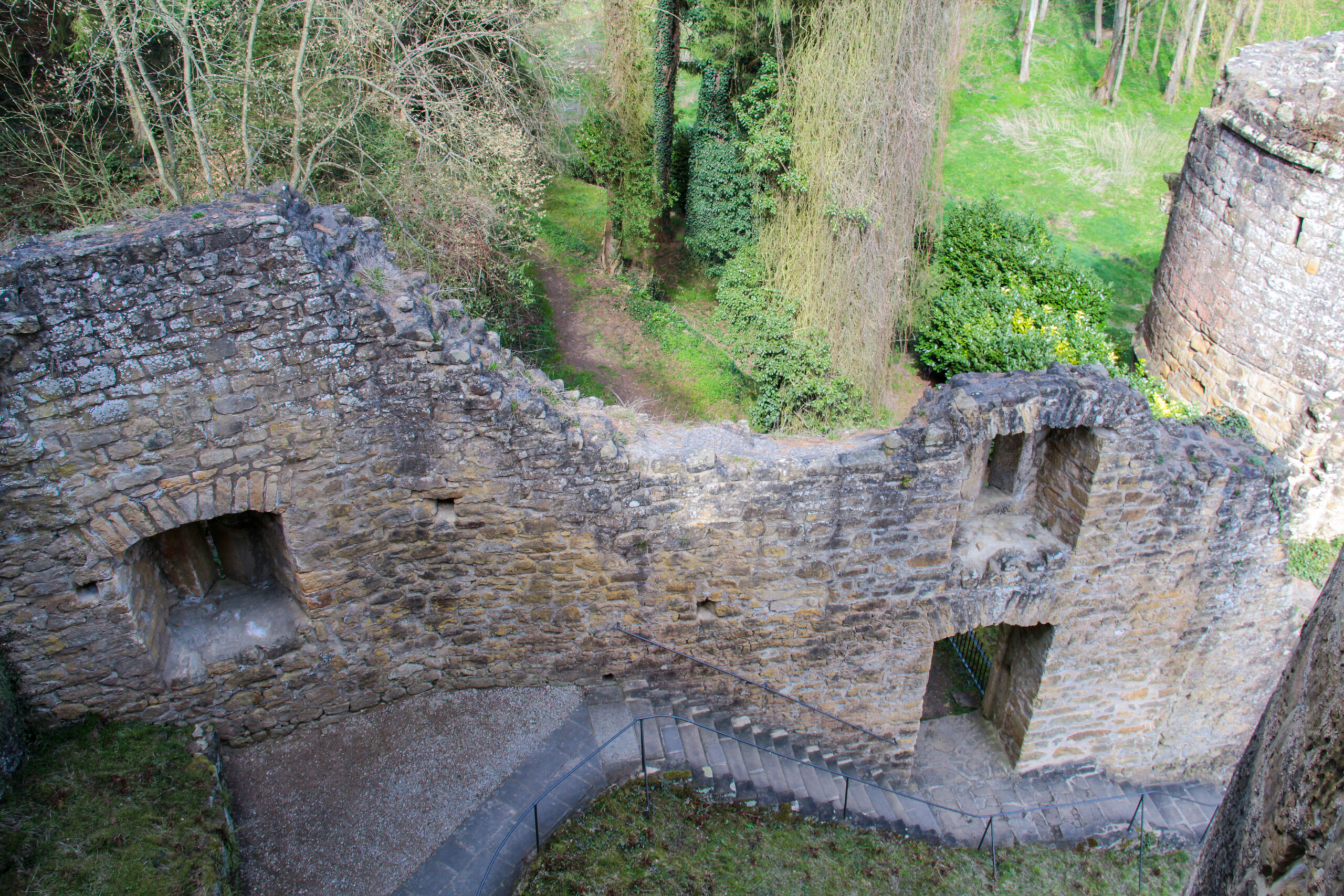
You can take the stairs to enter the renaissance part of the castle, where you can find the big dining hall and the great hall. This part is less destroyed as the rest of the castle.
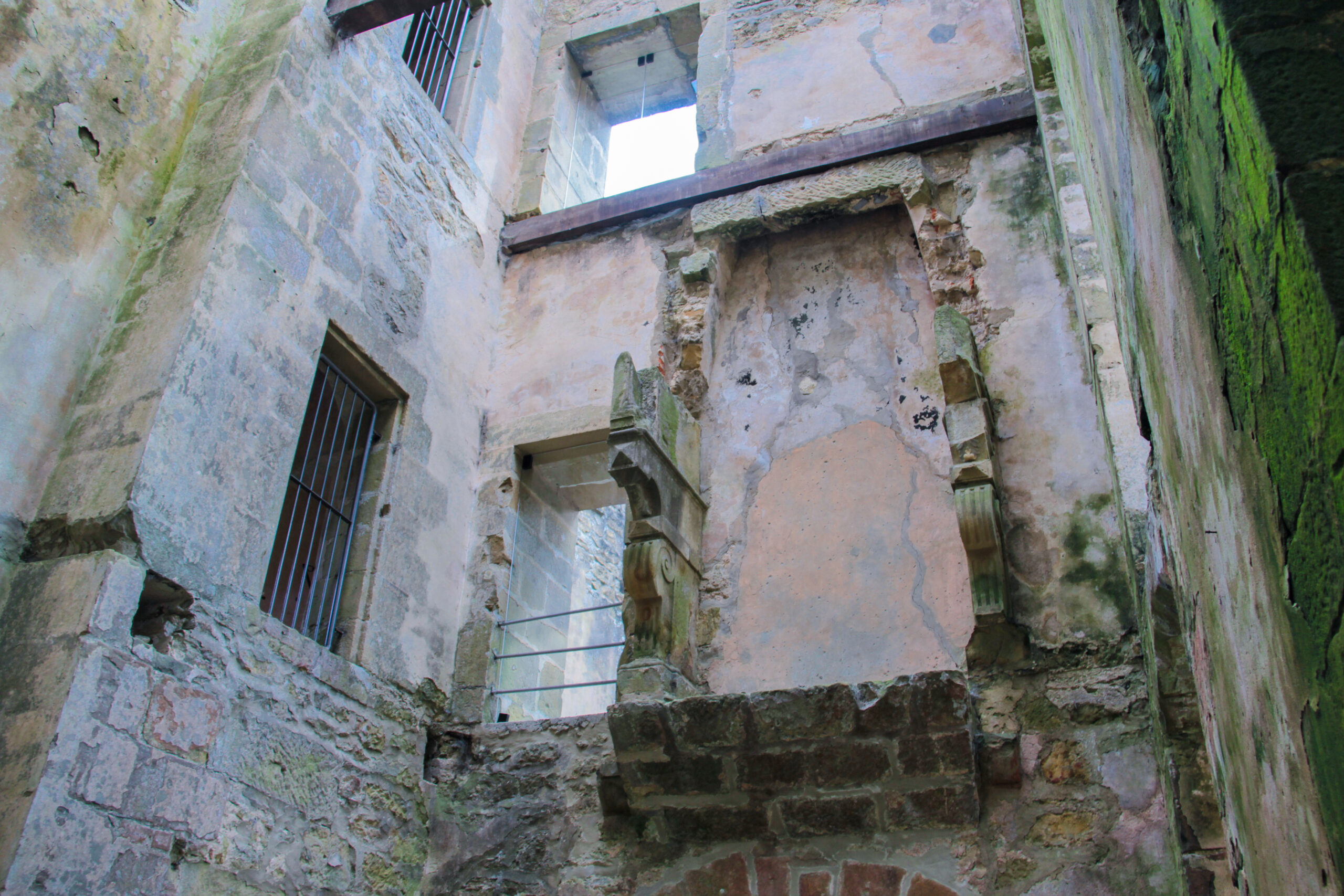
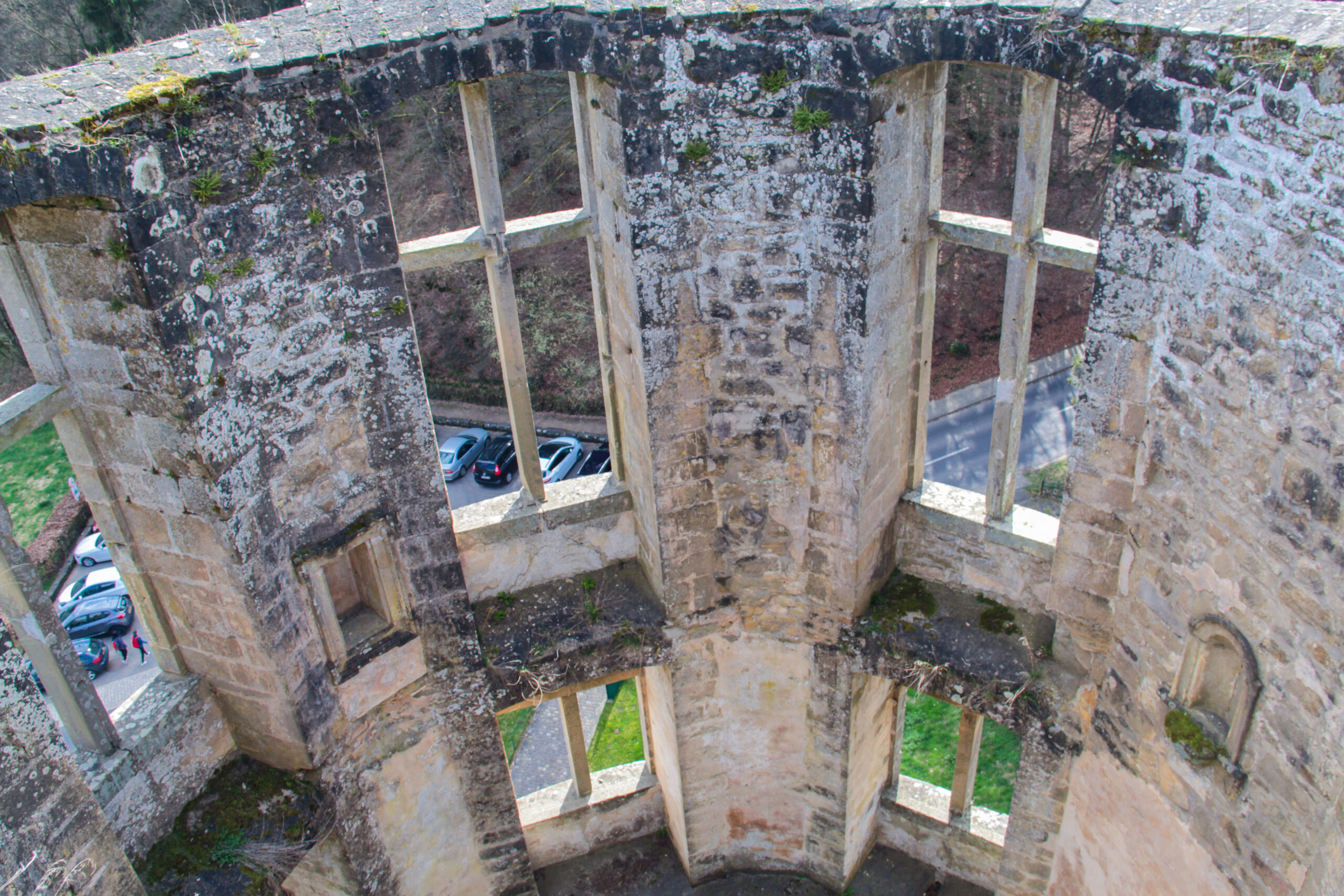
On the second floor, you can find the chapel of the castel. The whole part was connected by spiral stairs, that you can walk up to the upper part of the castle, where you have an amazing view over the whole estate of the two castles of Beaufort.
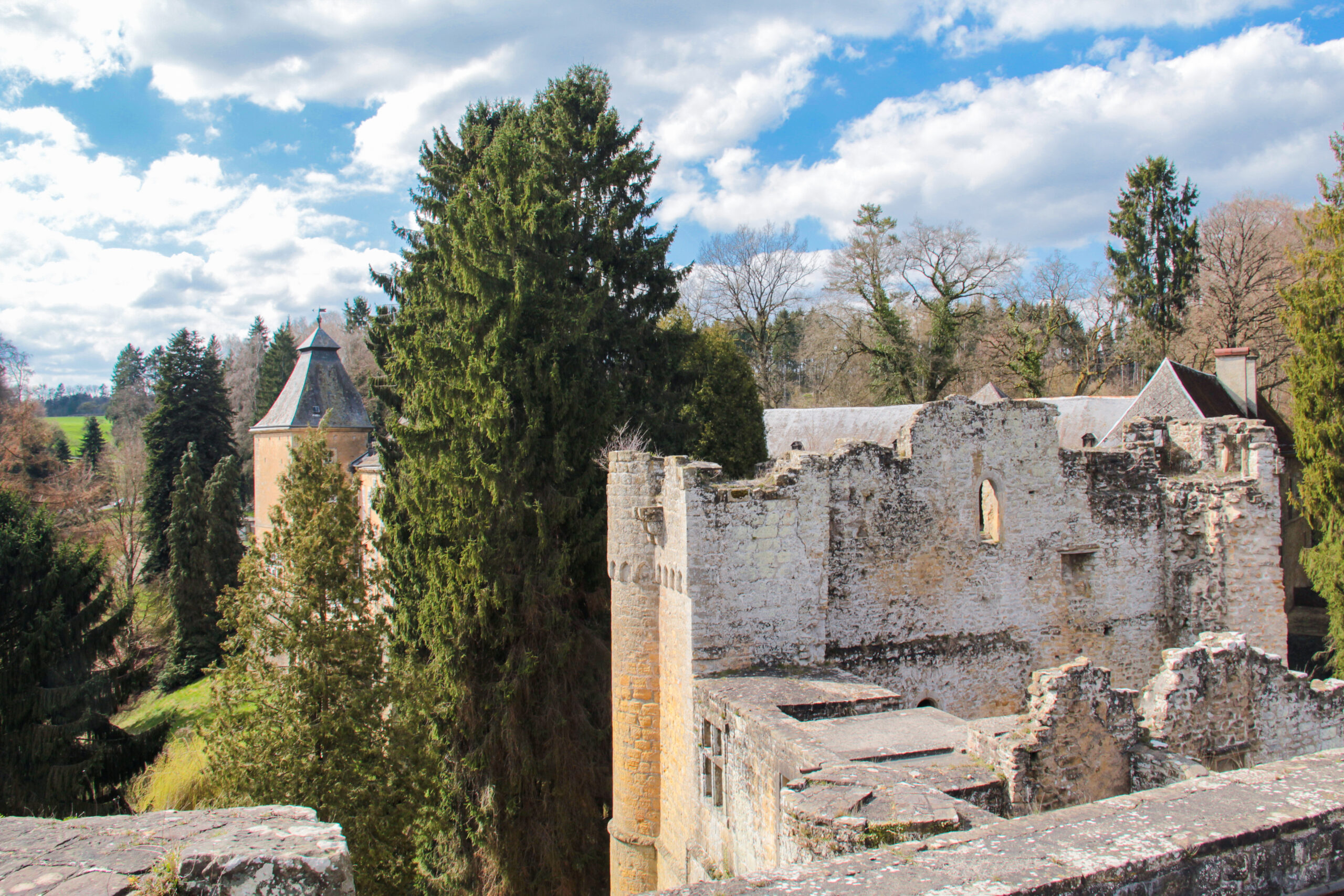
After Wauthier de Wiltz et Beaufort, there were a lot of different owners of the medieval castle in Beaufort like Johann von Orley, Bernard von Velbrück, Lord Peter Ernst von Mansfeld and the baron Johann von Beck. The name of Mansfeld is also today famous in Luxembourg, because there is a restaurant called Brasserie Mansfeld and Mansfeld is also a vodka made here in Luxembourg City.
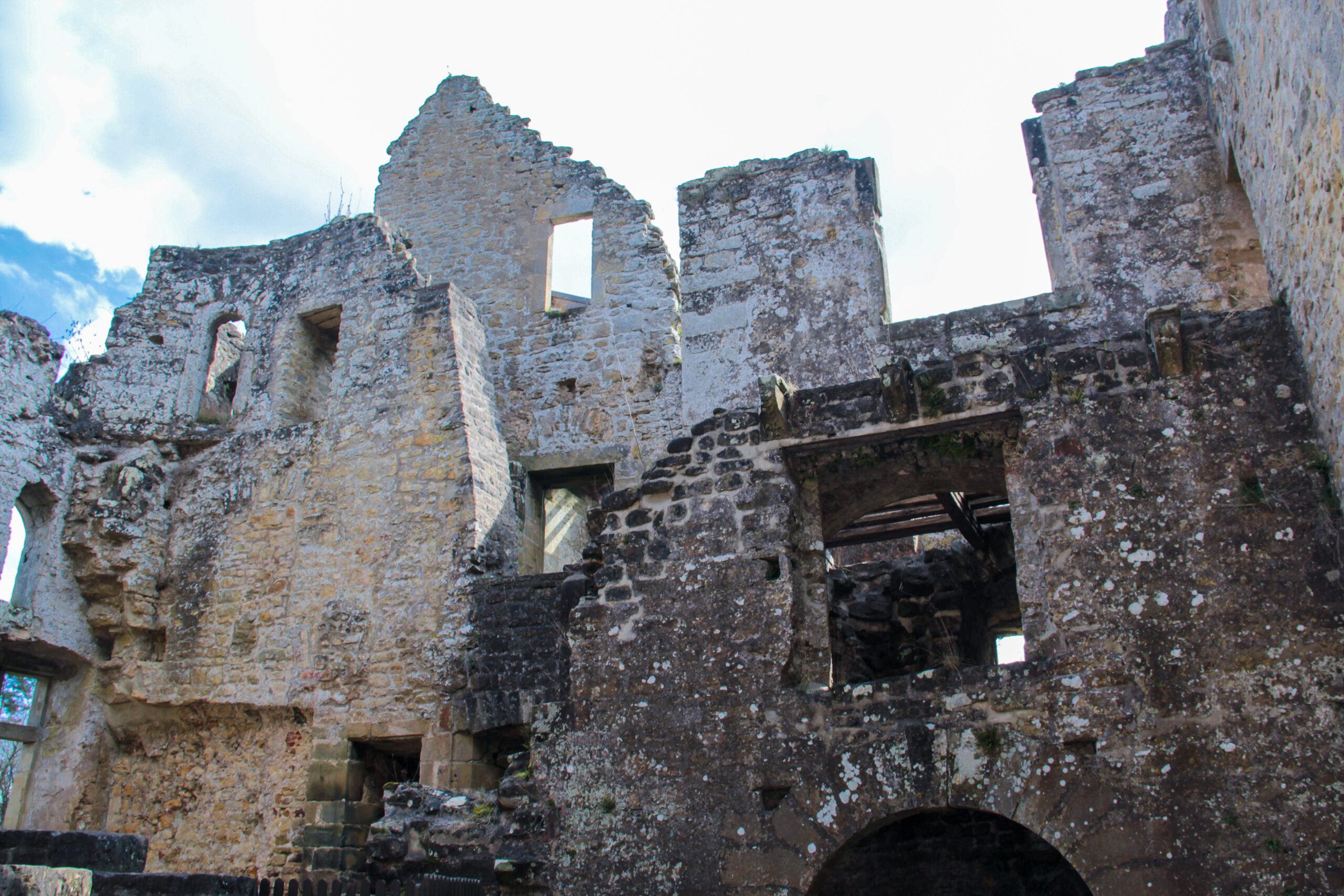
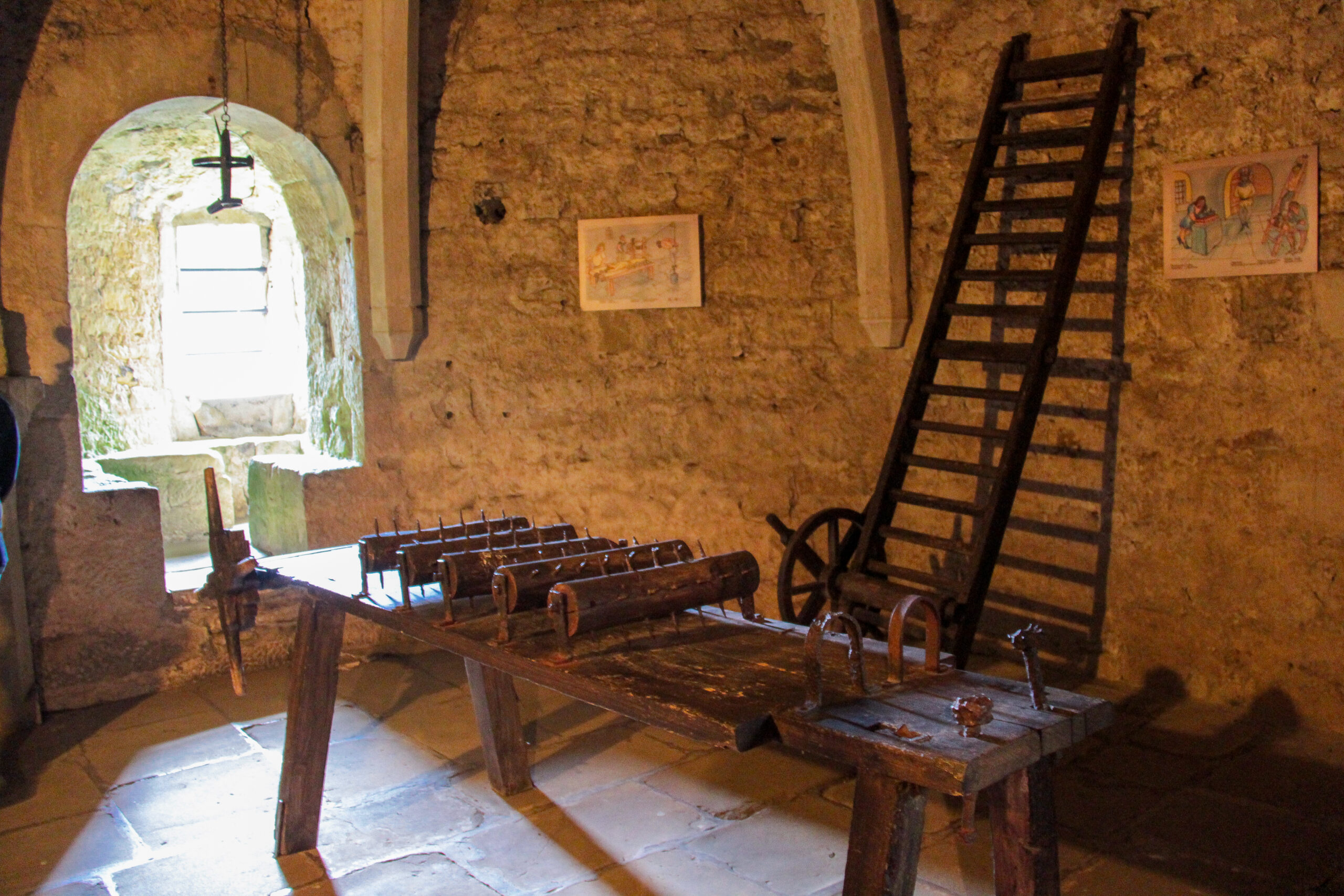
From the second part of the 18th century, the medieval castle is inhabited and used by the habitants of Beaufort as a quarry.
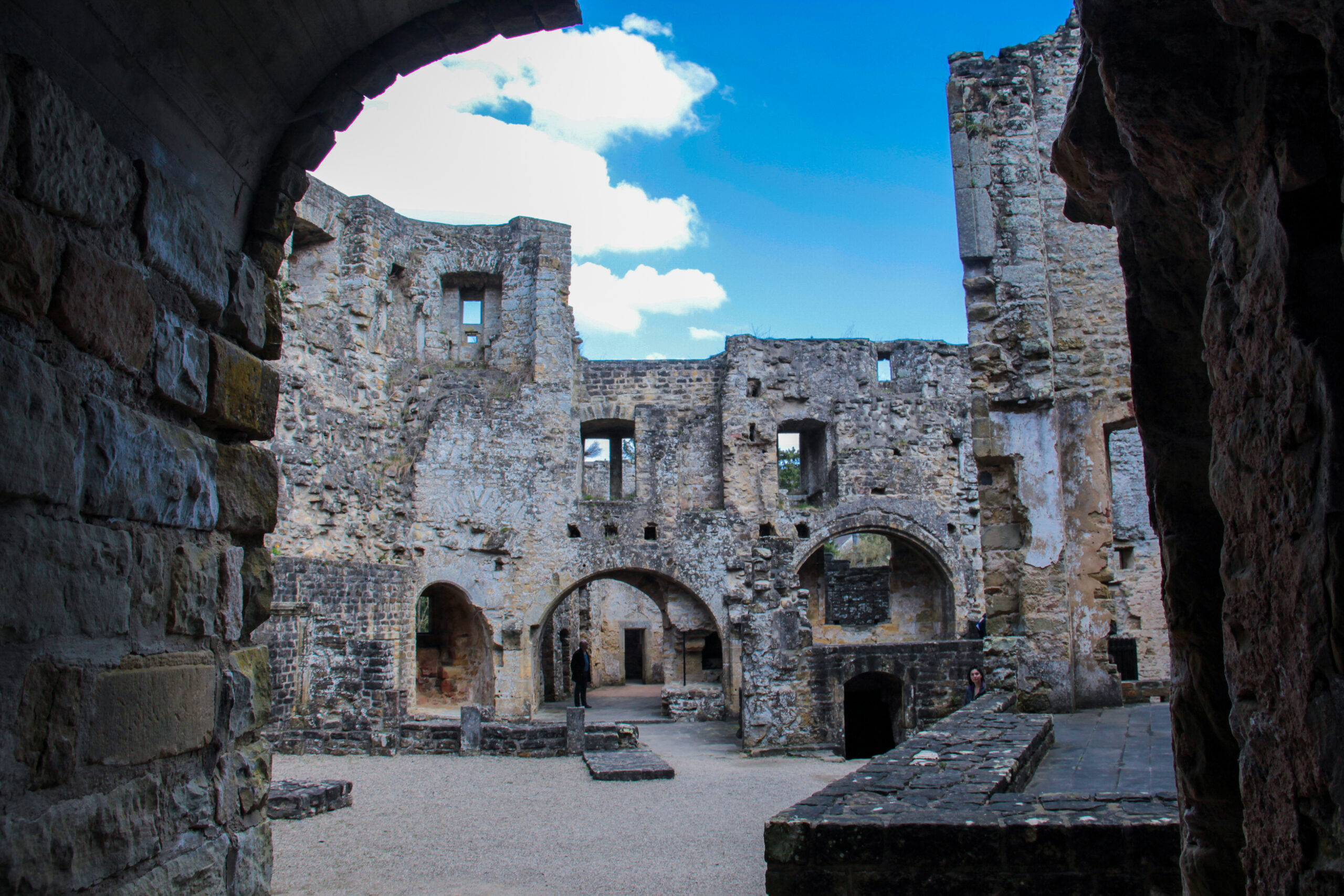
In 1928, the owner, Edmond Linckels fixed the ruins, which were inhabited since 300 years and from 1932, it was open to the public.
Renaissance Castle Beaufort
The Renaissance Castle in Beaufort was built in 1649 next to the medieval castle. Johann von Beck was the last knight who lived in the old medieval castle. This one was not pompously enough and so he ordered the construction of the new renaissance castle. Unfortunately, he died during a combat in 1948 and so he never saw its castle being finished.
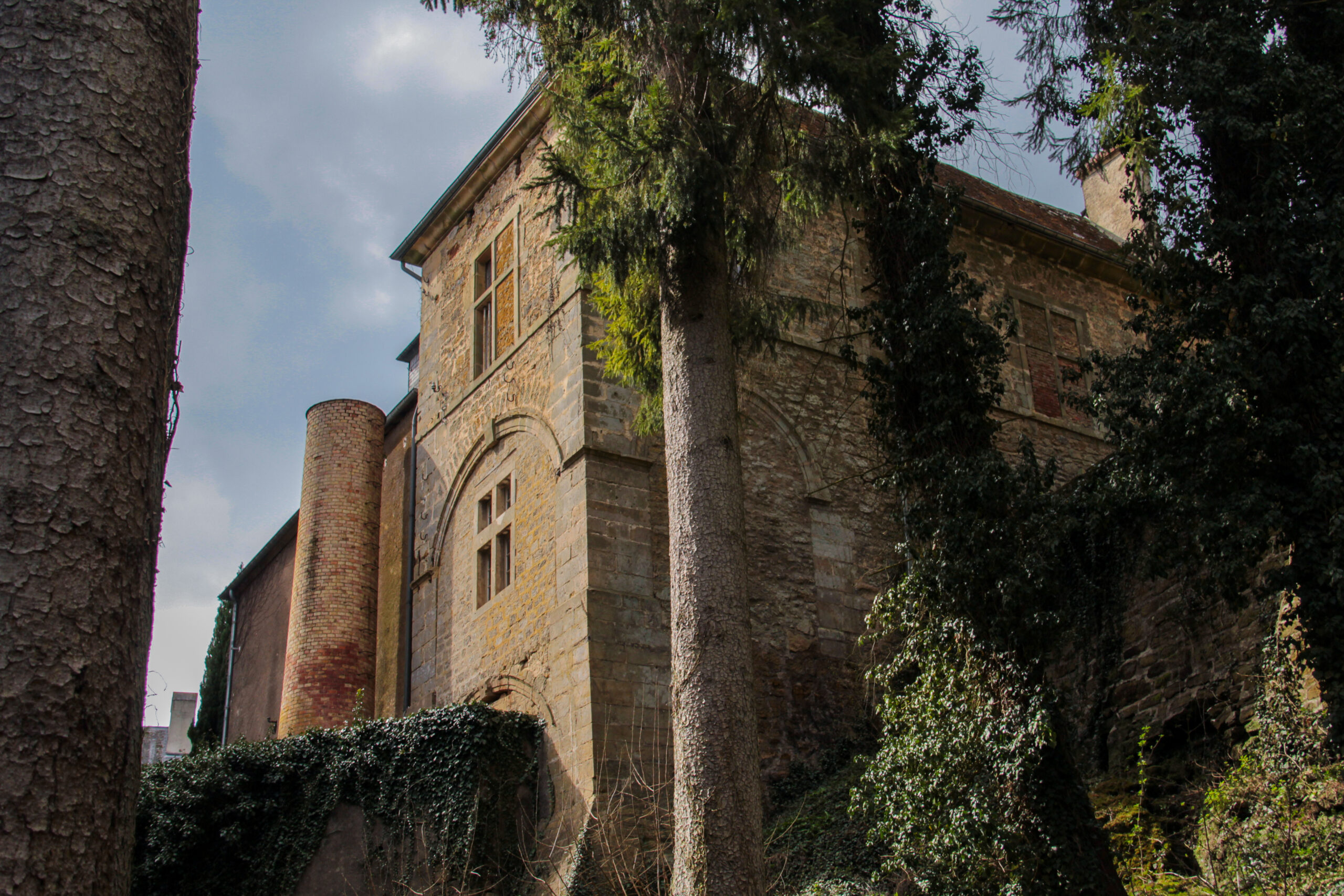
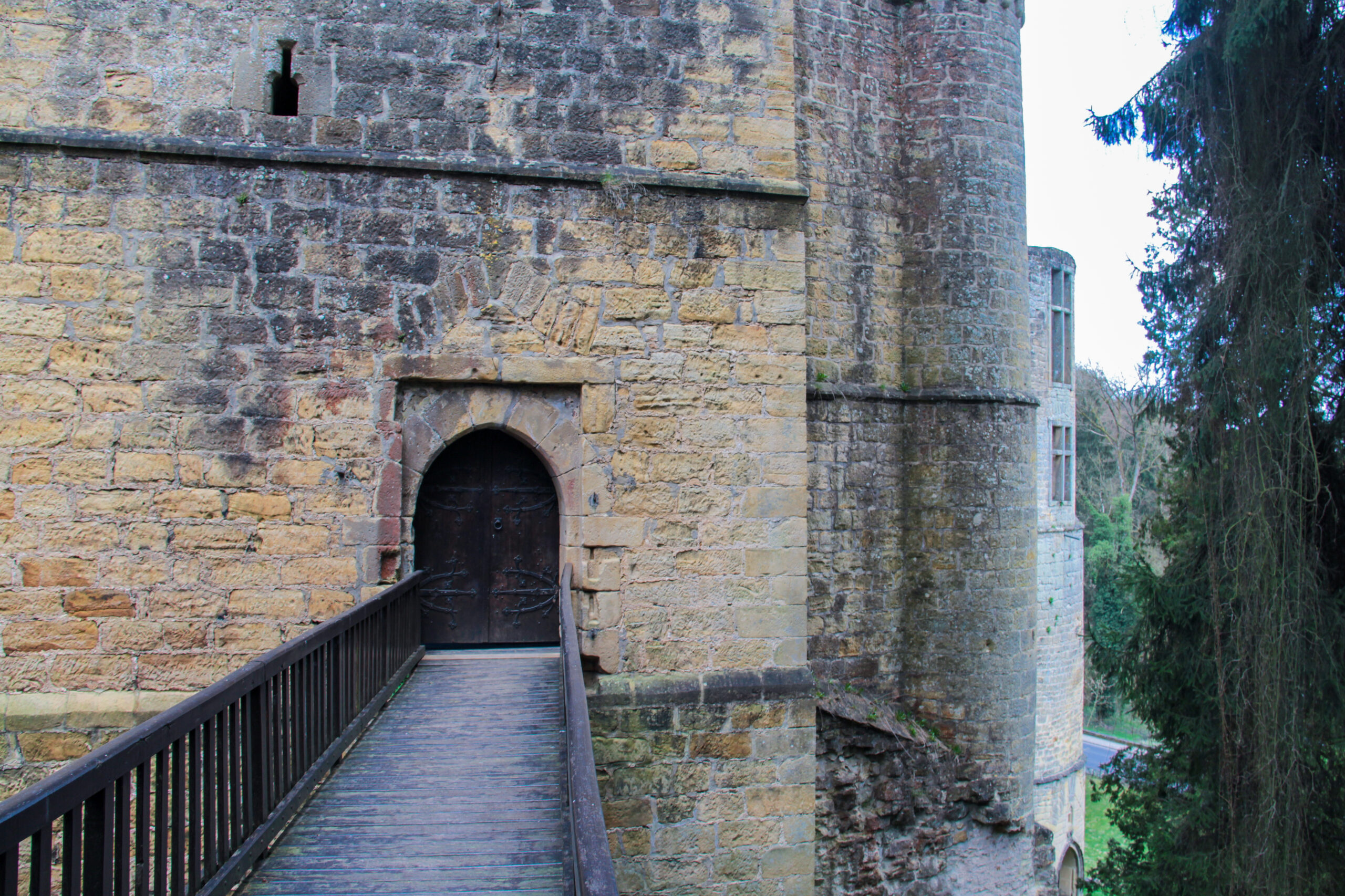
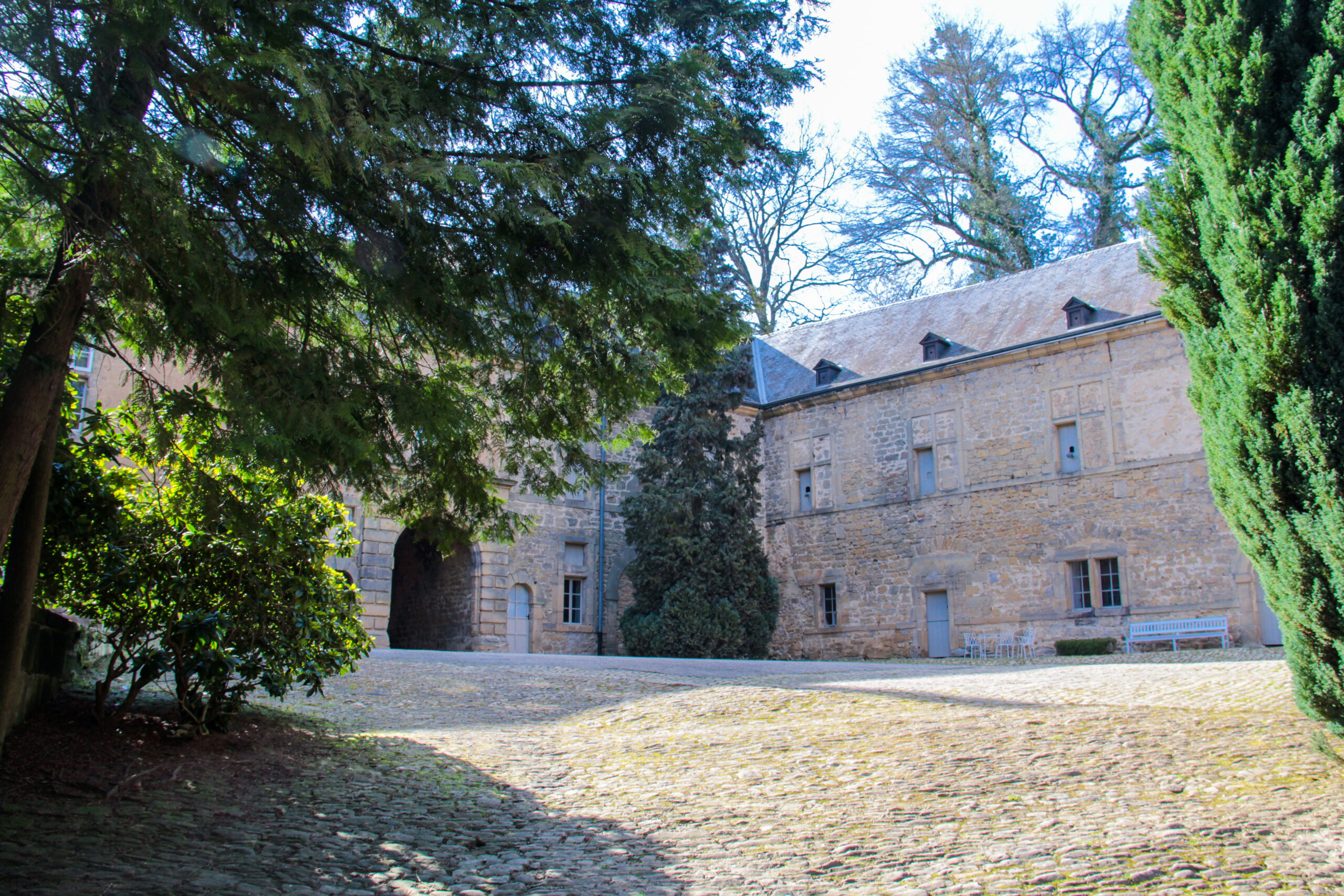
His son Johann Georges von Beck finished the construction of the castle and also built the Donatus chapel, which is situated in the forest near the castles.
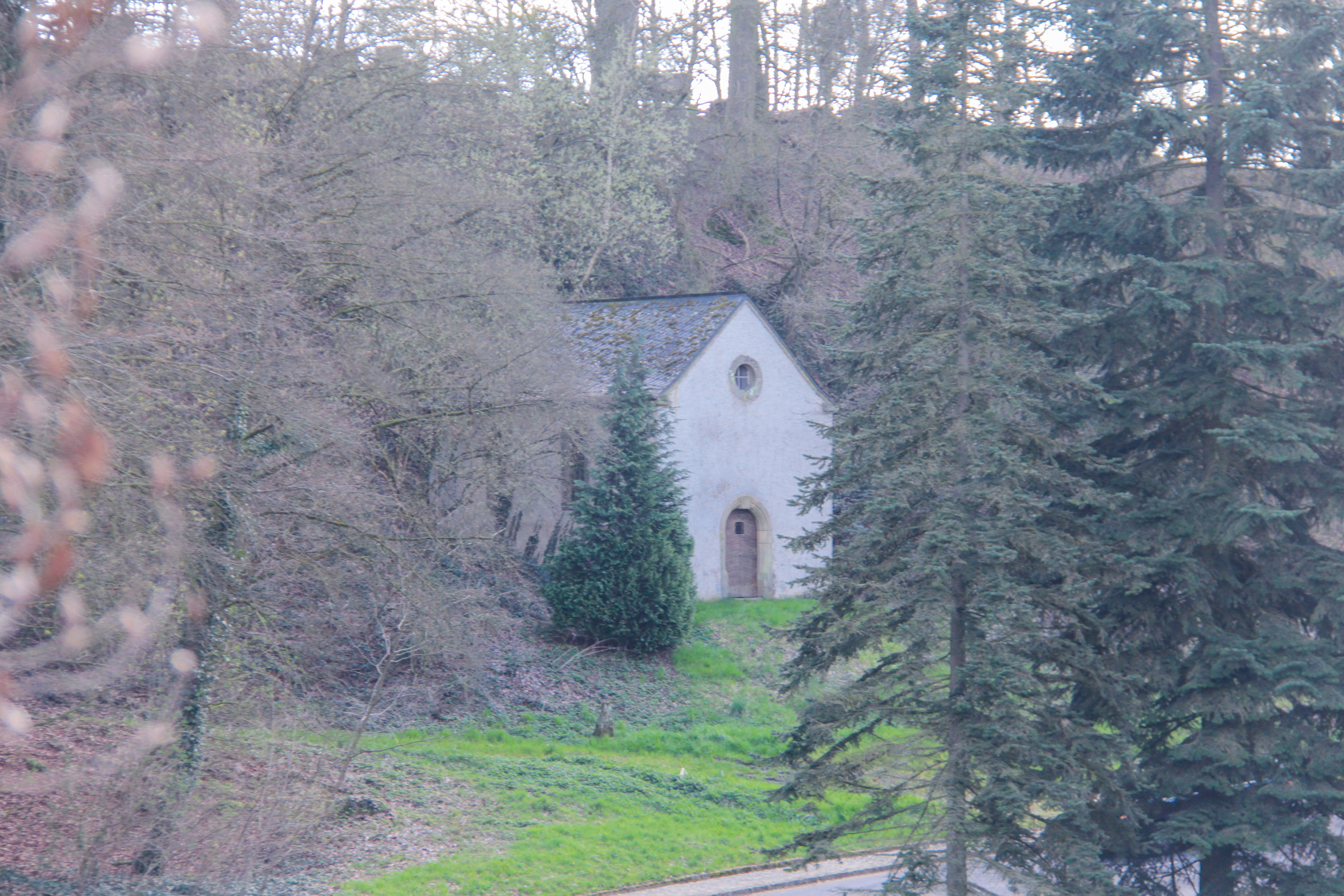
And so in the last decades, the names of the owners of the castles was always given by the females like Liedekerke-Beaufort and de Lannoy-Clervaux. All of those were living in Belgium and visited their castles in Beaufort only in summer for holidays. This was also the reason why the two castles were run-downed. Luckily, the renaissance castle was never really the victim of an attack.
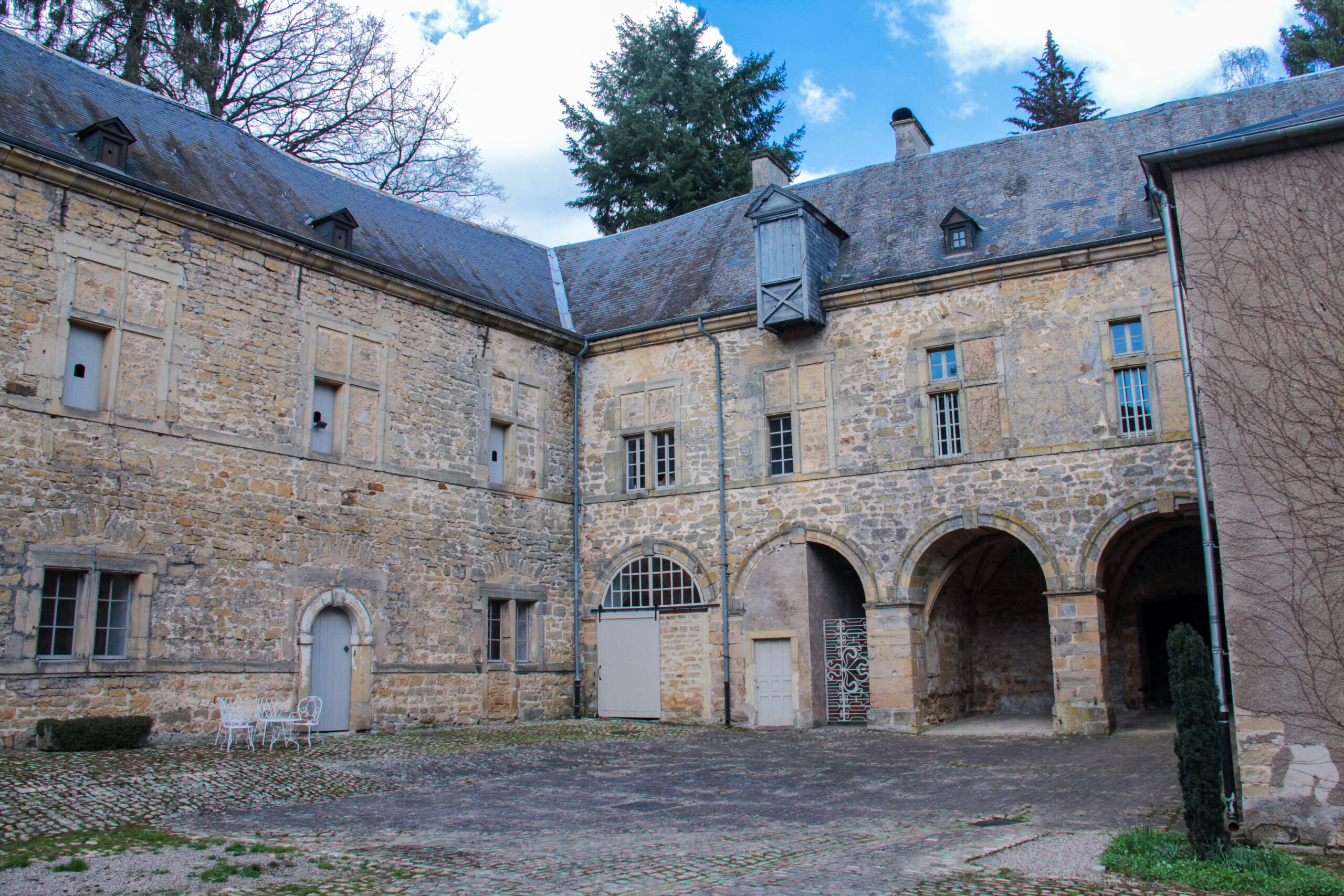
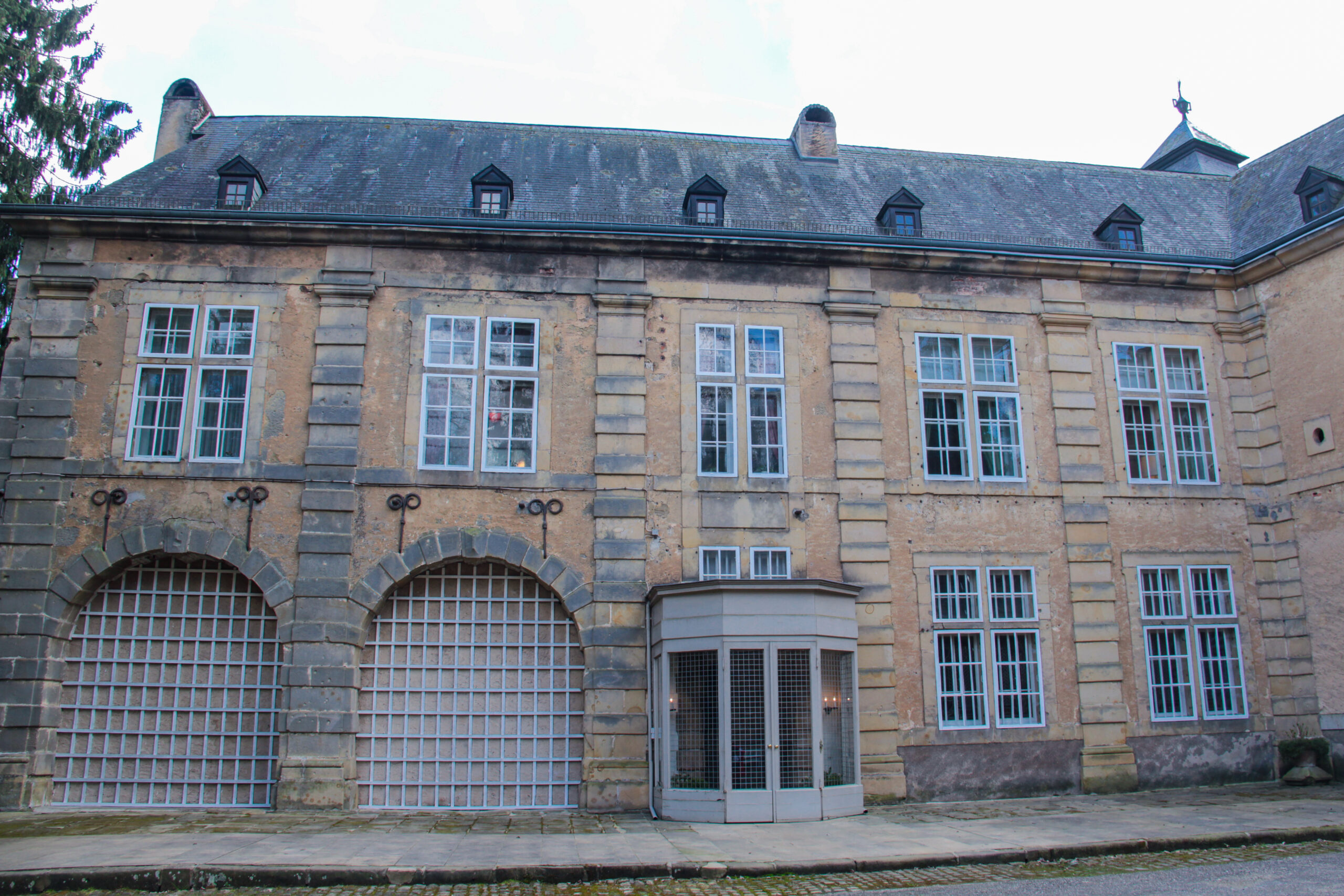
In 1850, the State of Luxembourg declared the two castles in Beaufort as a listed historic monument to give them at least a little chance to be preserved for the posterity.
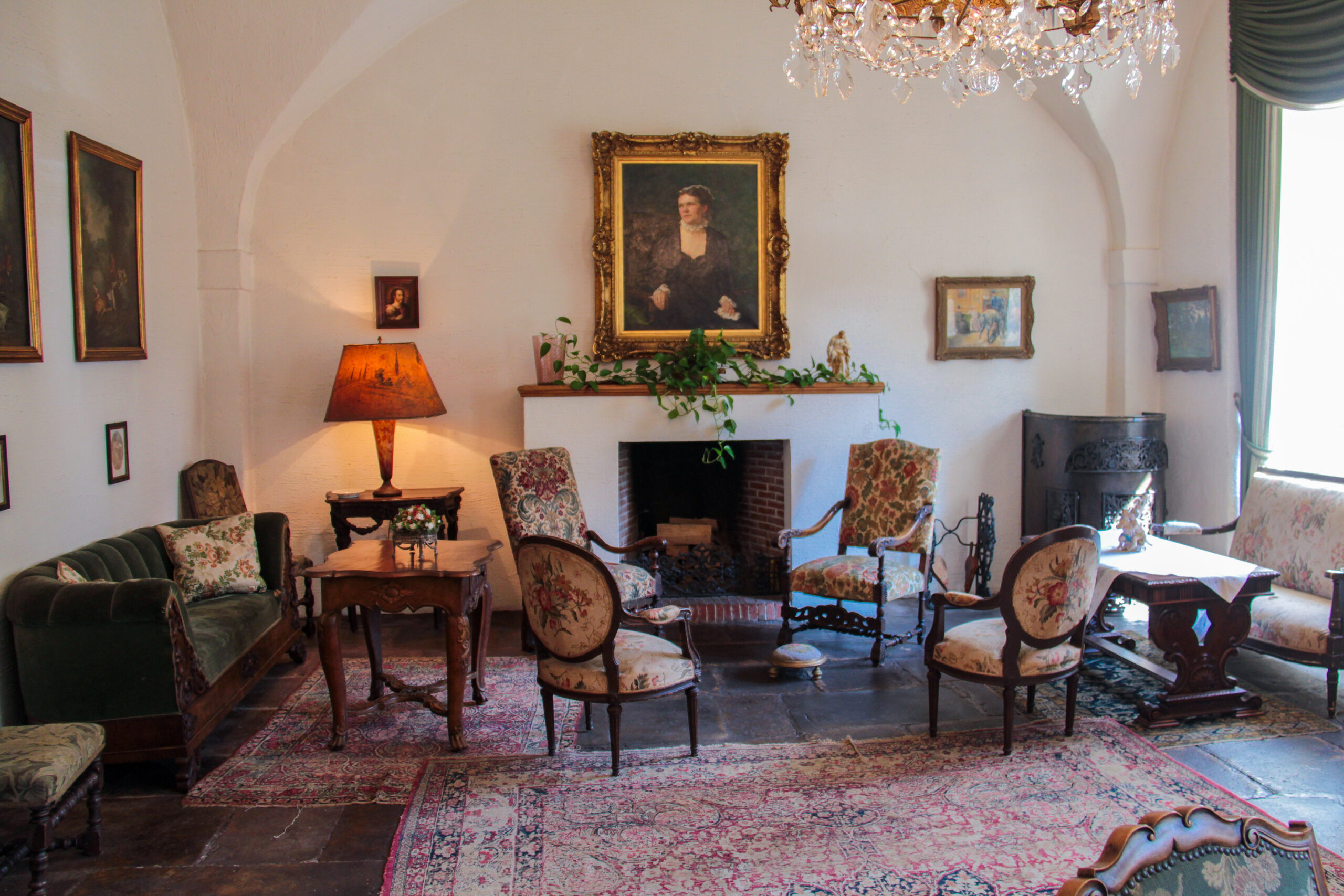
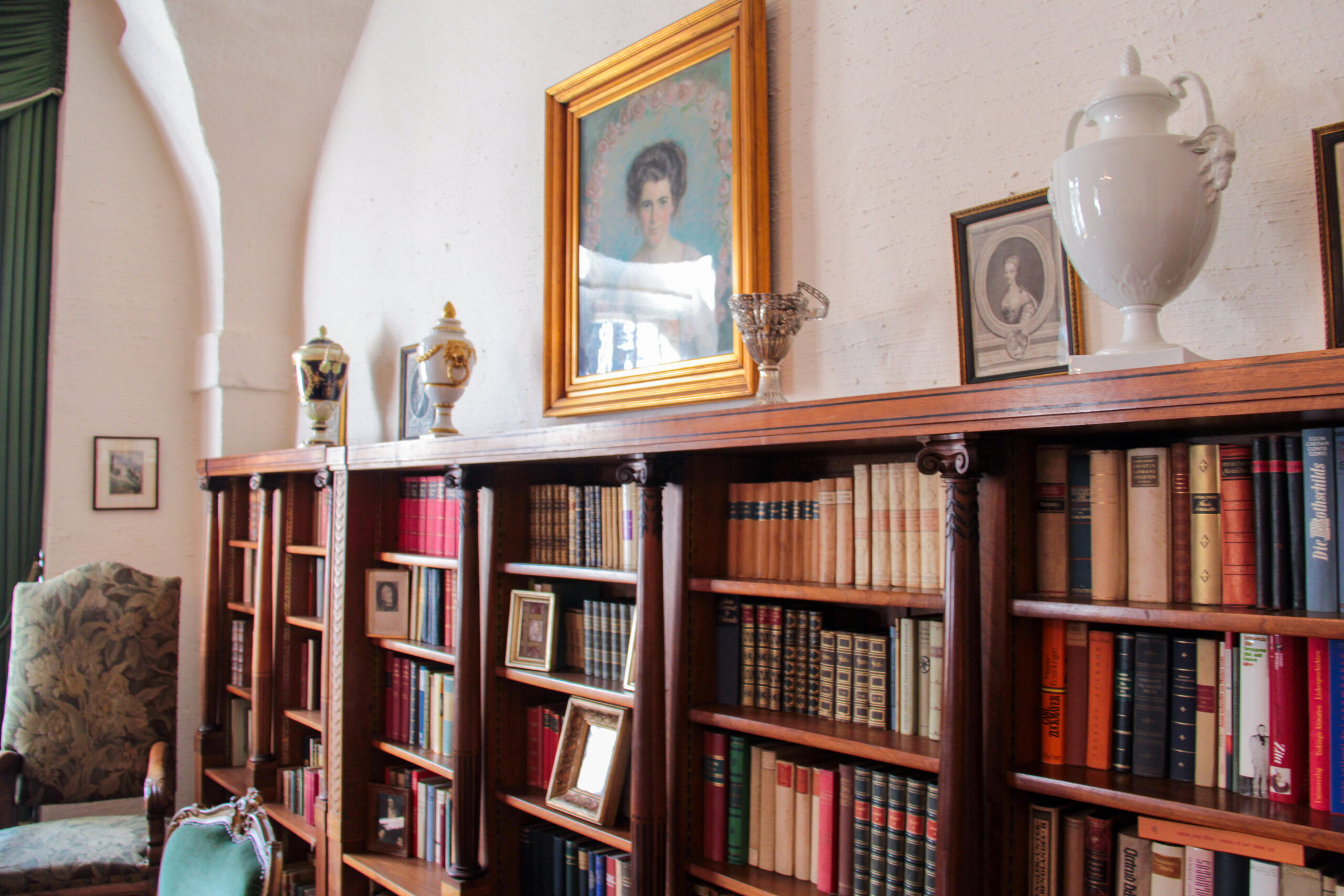

After a public sale, the castles were given to Henri Even who lived and farmed again there. He and his son-in-law Joseph Linckels transformed the castles again into the beautiful and charming castles that they were in an earlier epoch.
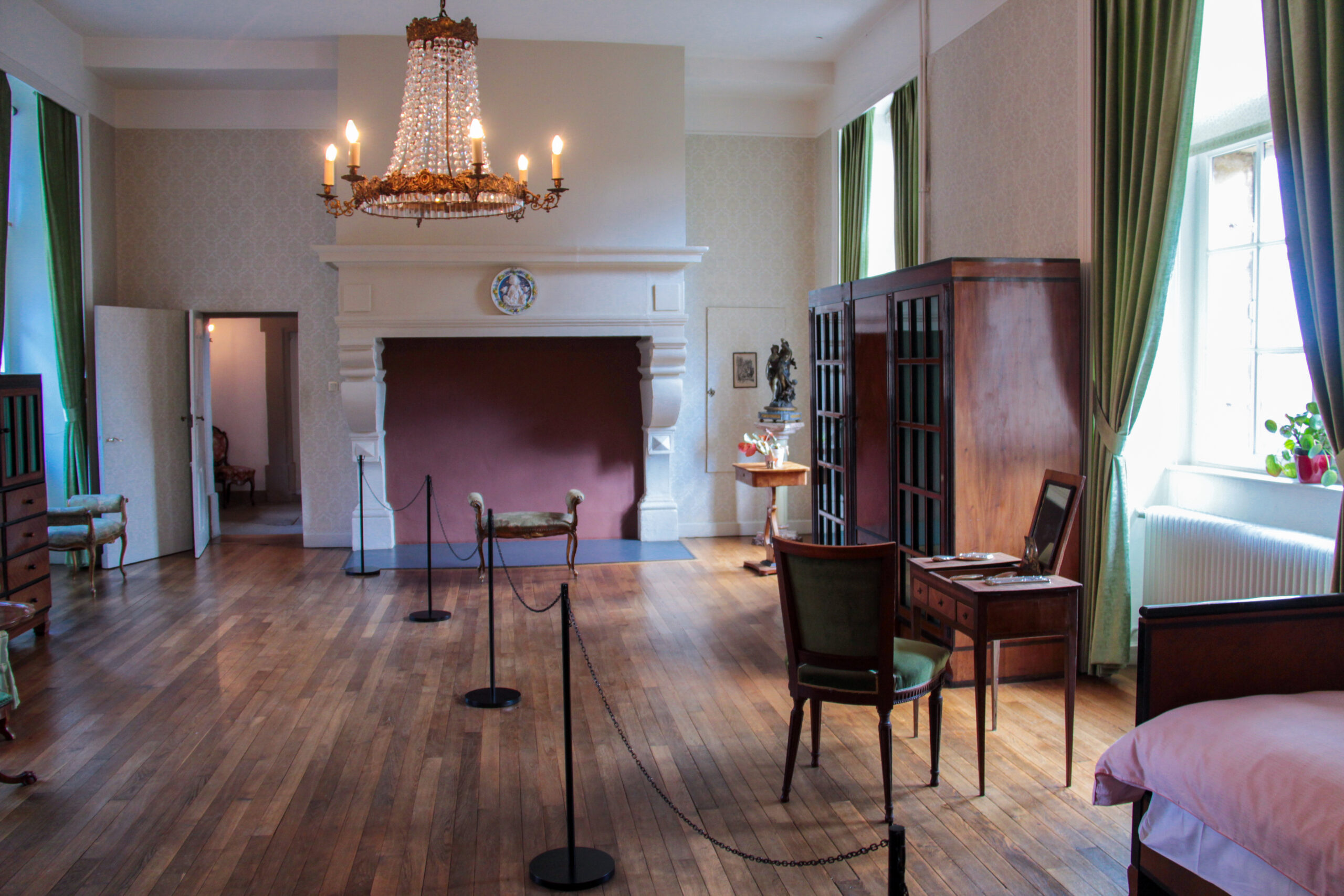
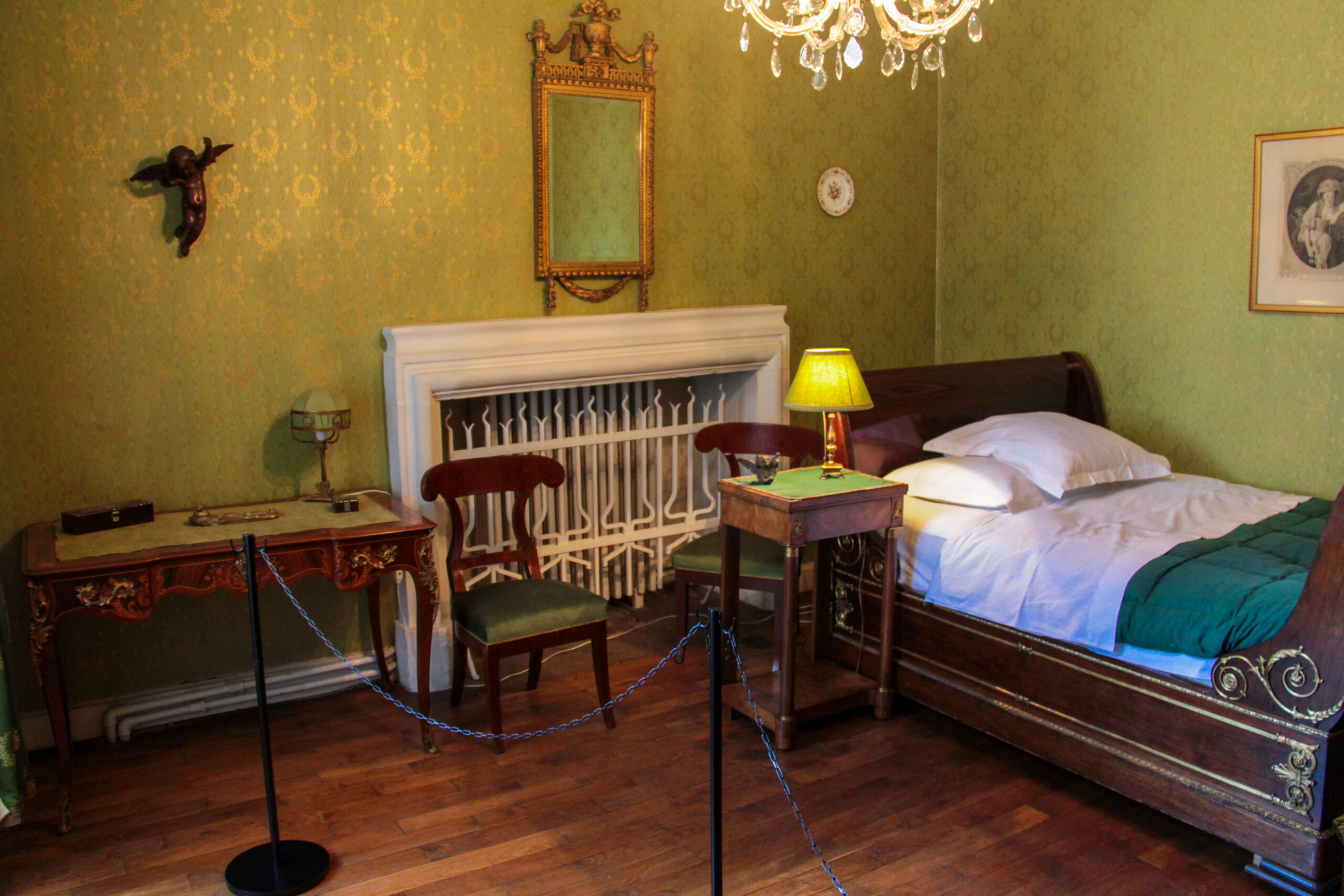
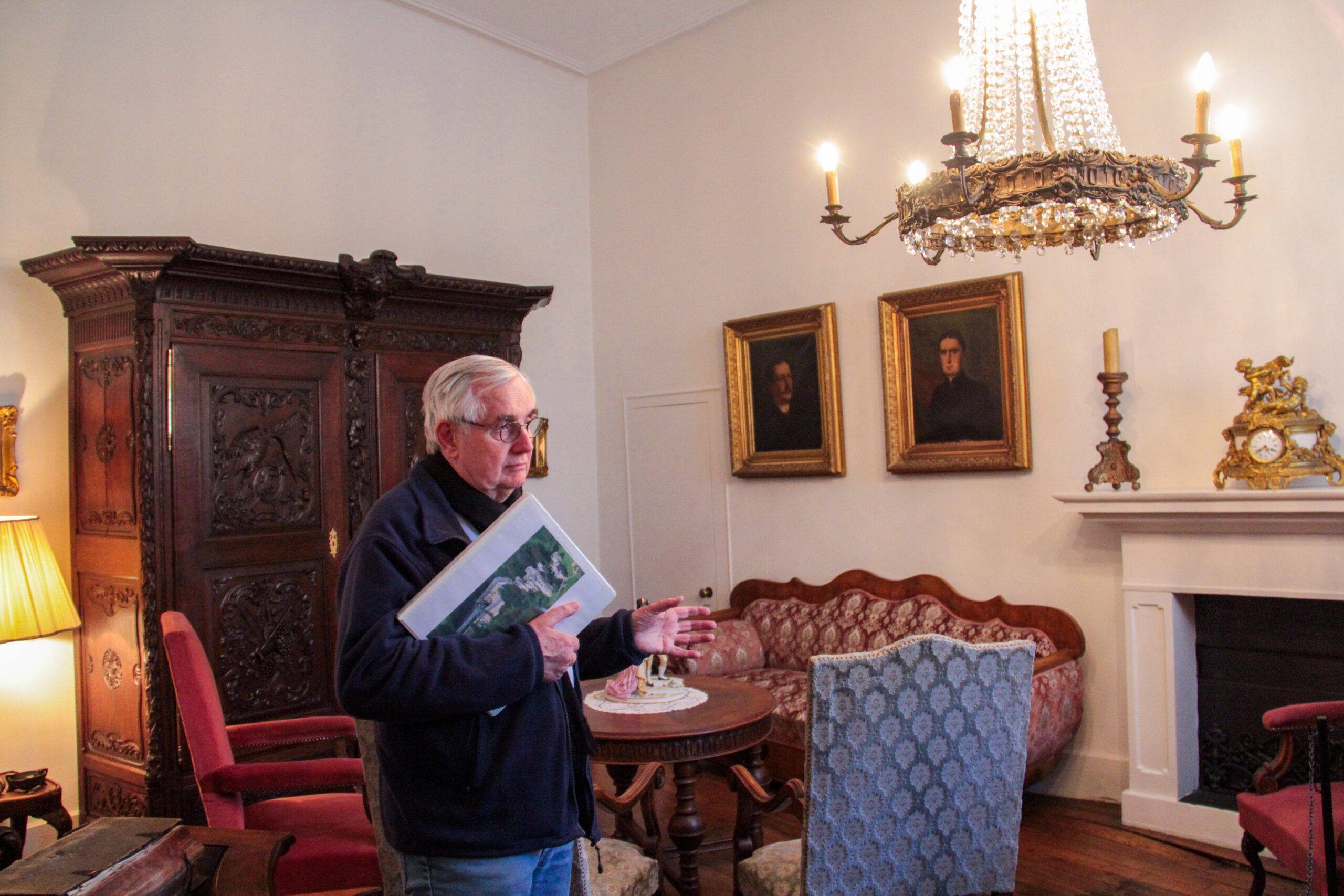
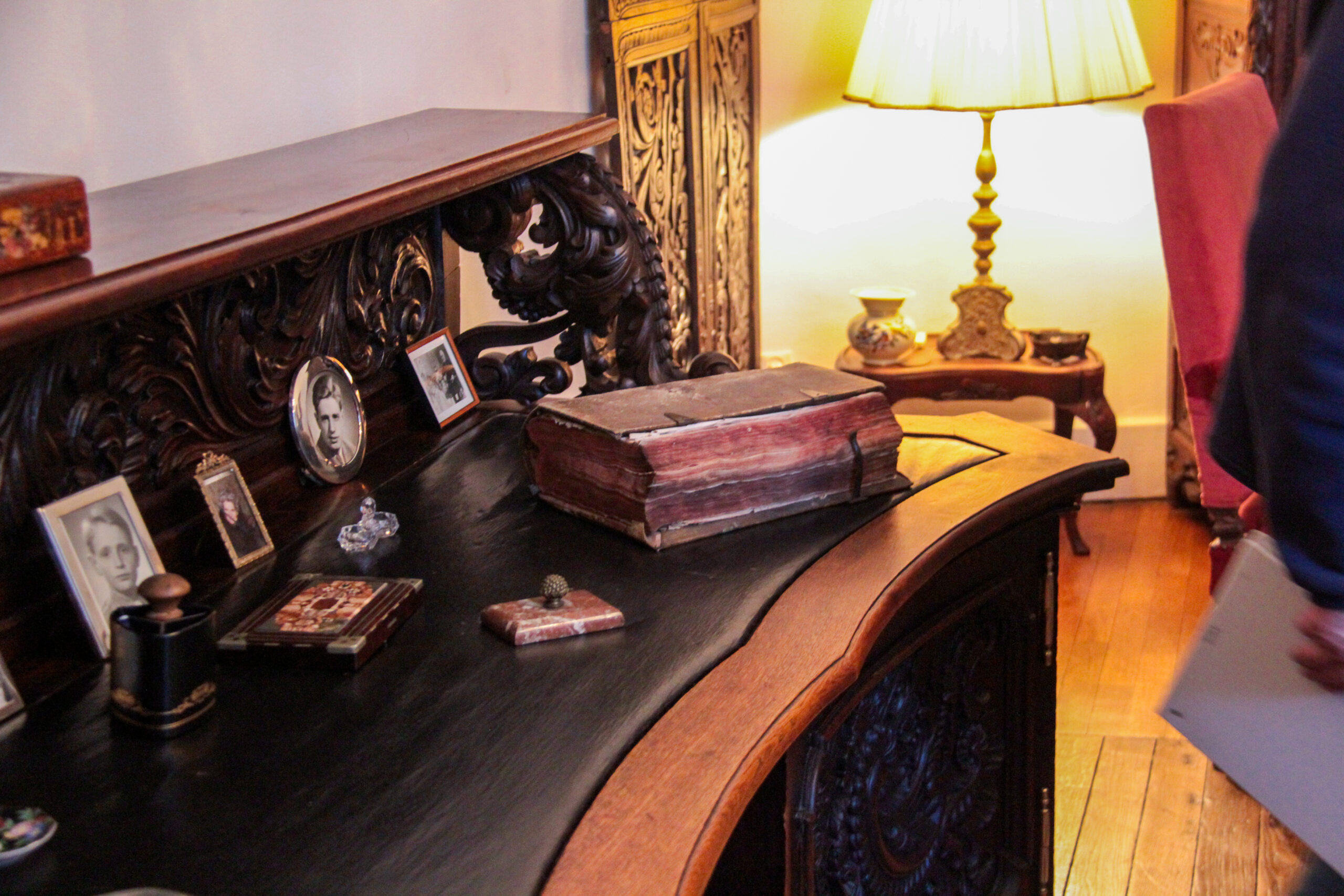
After WWI, the ruins of the medieval castles were fixed by Edmond Linckels and in 1930 they were safe enough to be open as a tourist attraction. To reach this, he repaired old walls, made new paths and view points etc. During the Rundstedt offensive, the ruins were massively attacked by shells, but luckily most of them were rebounded. Also during WWII, the castles was attacked and the family Linckels-Volmer had to flee.
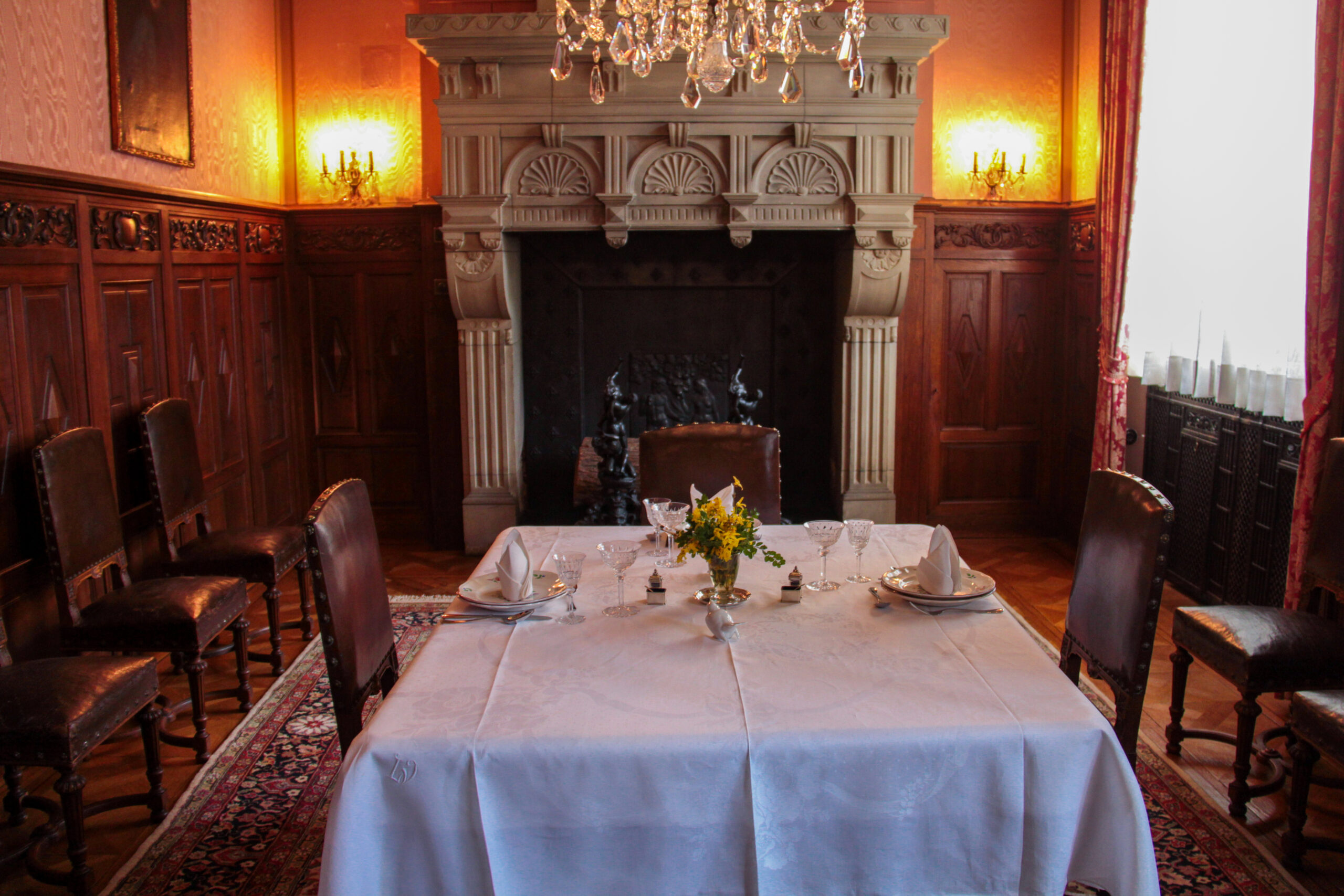
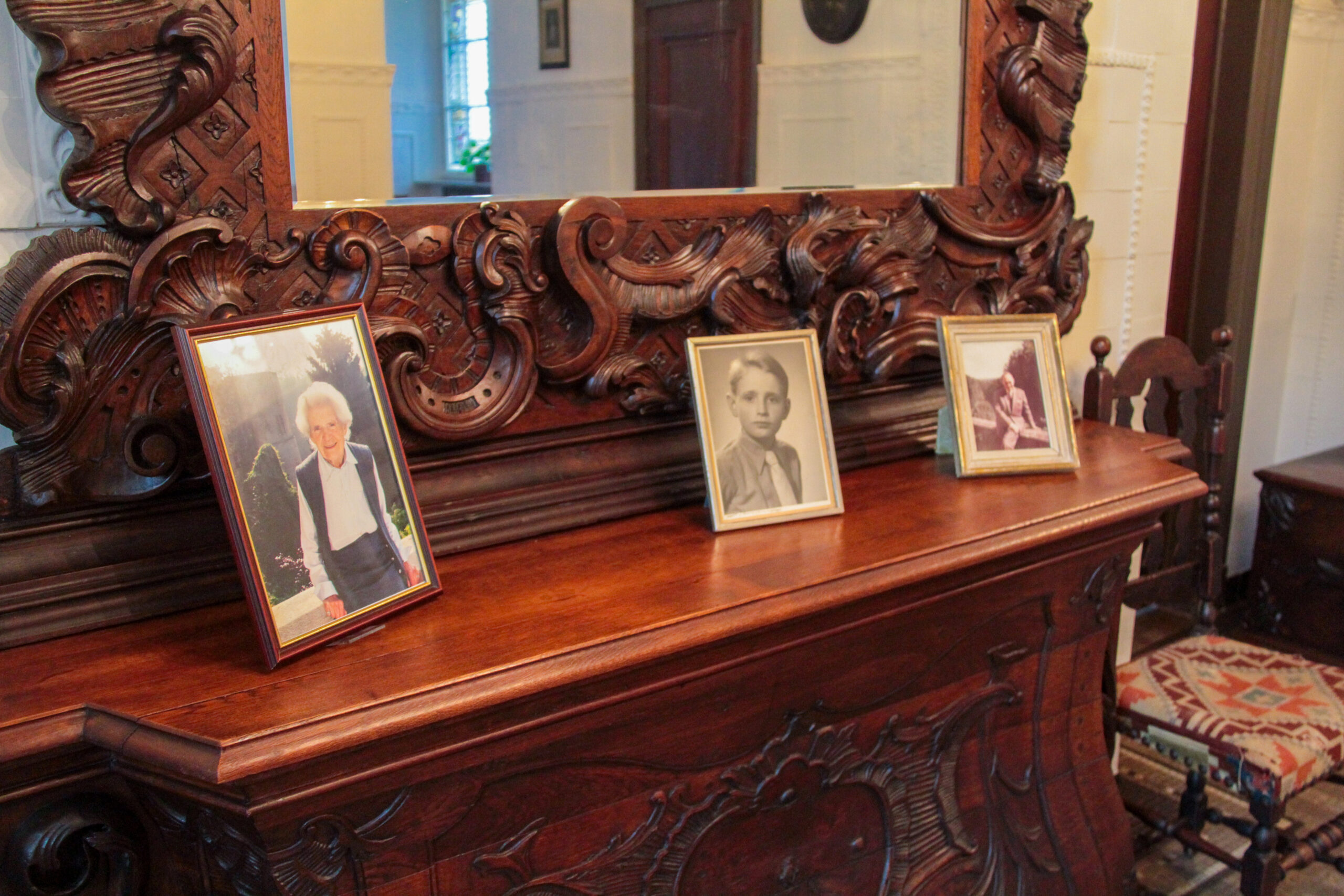
In 1930, Edmond Linckels started with the production of the Cassero, a liqueur made out of black currant. The Cassero is still made in the renaissance castle in Beaufort. In 1934, he married Anne-Marie Volmer. Their son José was born in 1936, but unfortunately he was handicapped and so he didn’t marry and didn’t had any children, which means that there are no inheritors. He died in 1989.
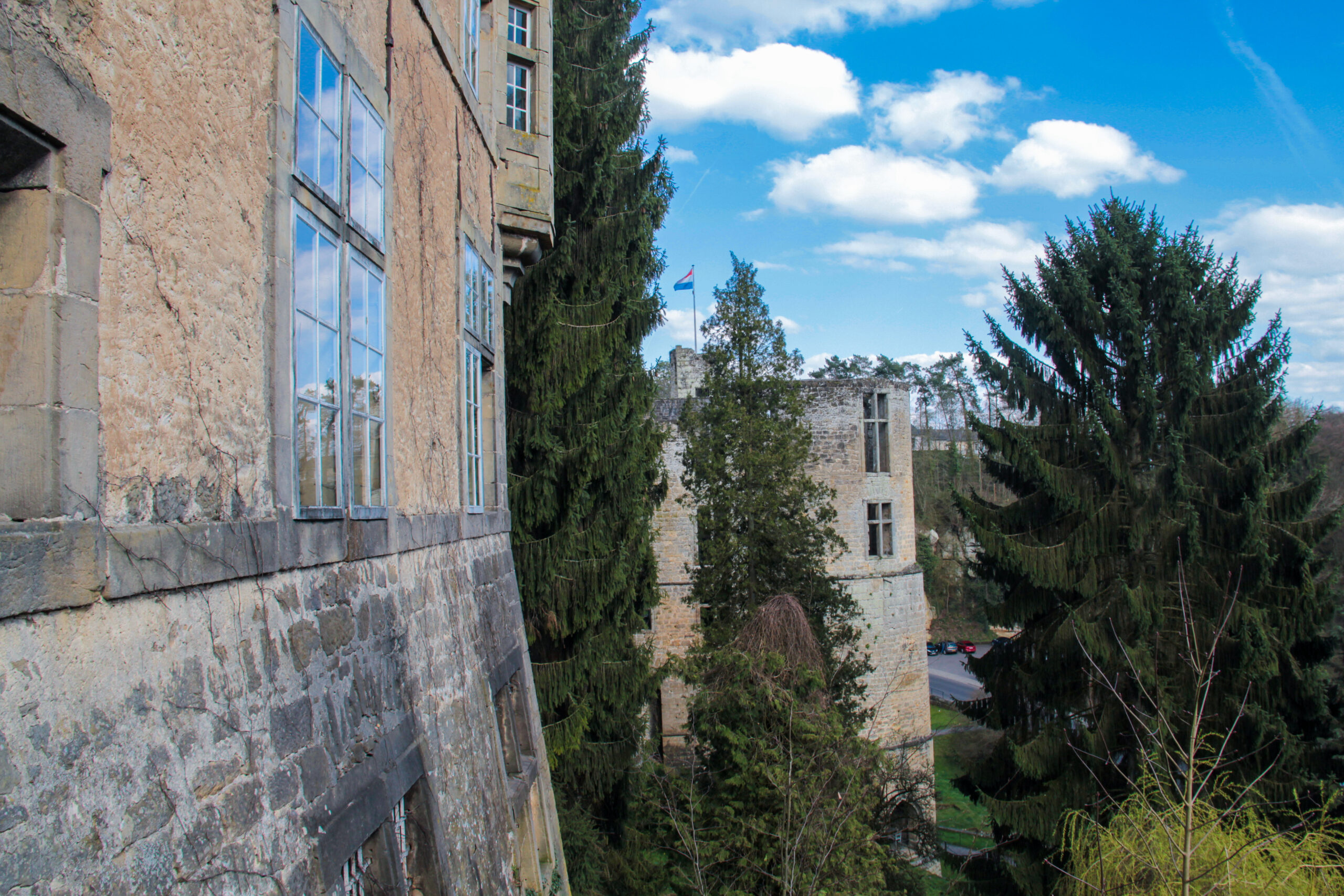
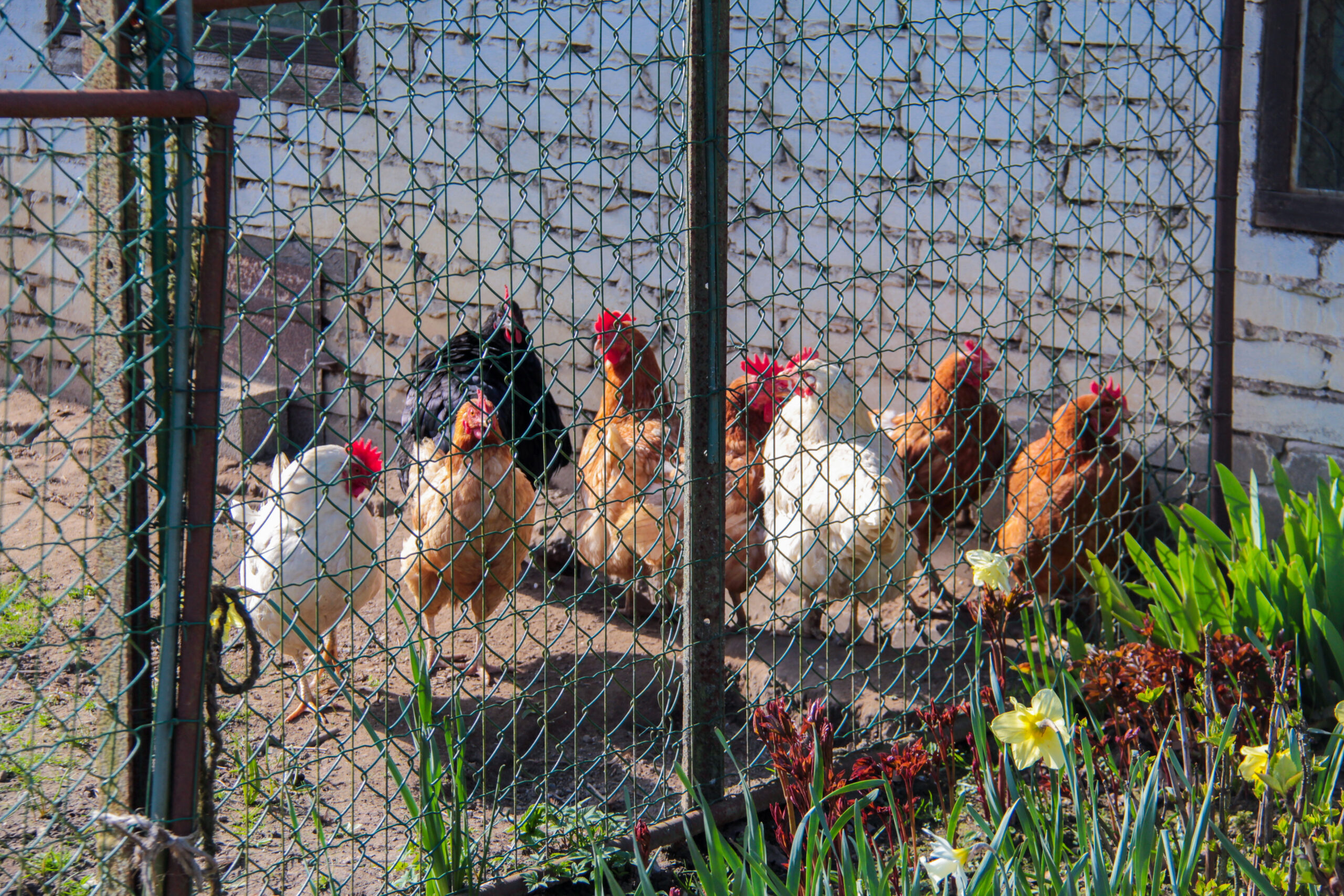
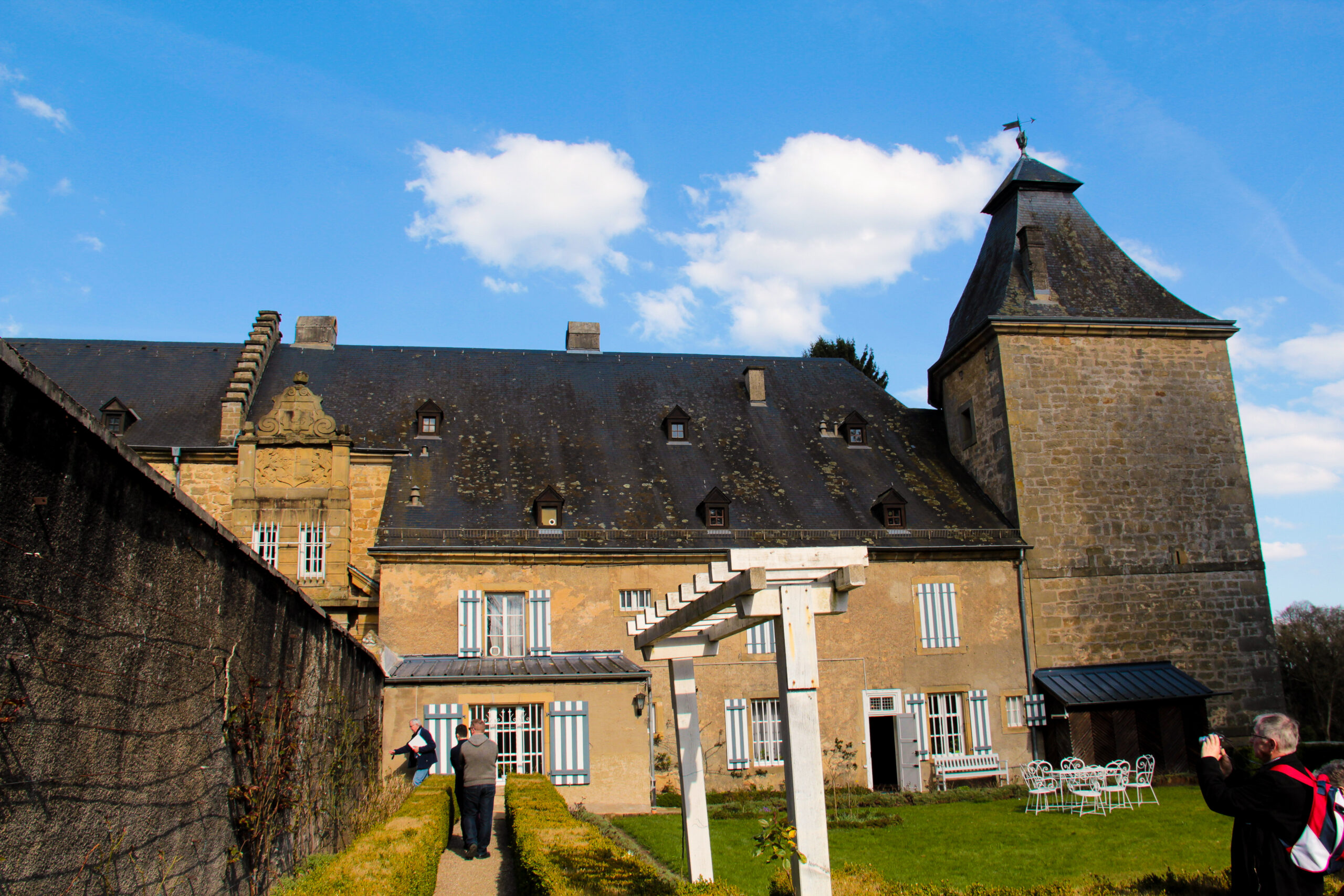
Edmond Linckels was very active in the tourism department for Luxembourg and especially Beaufort. Unfortunately he died in 1975. His widow continued to live in the castle.
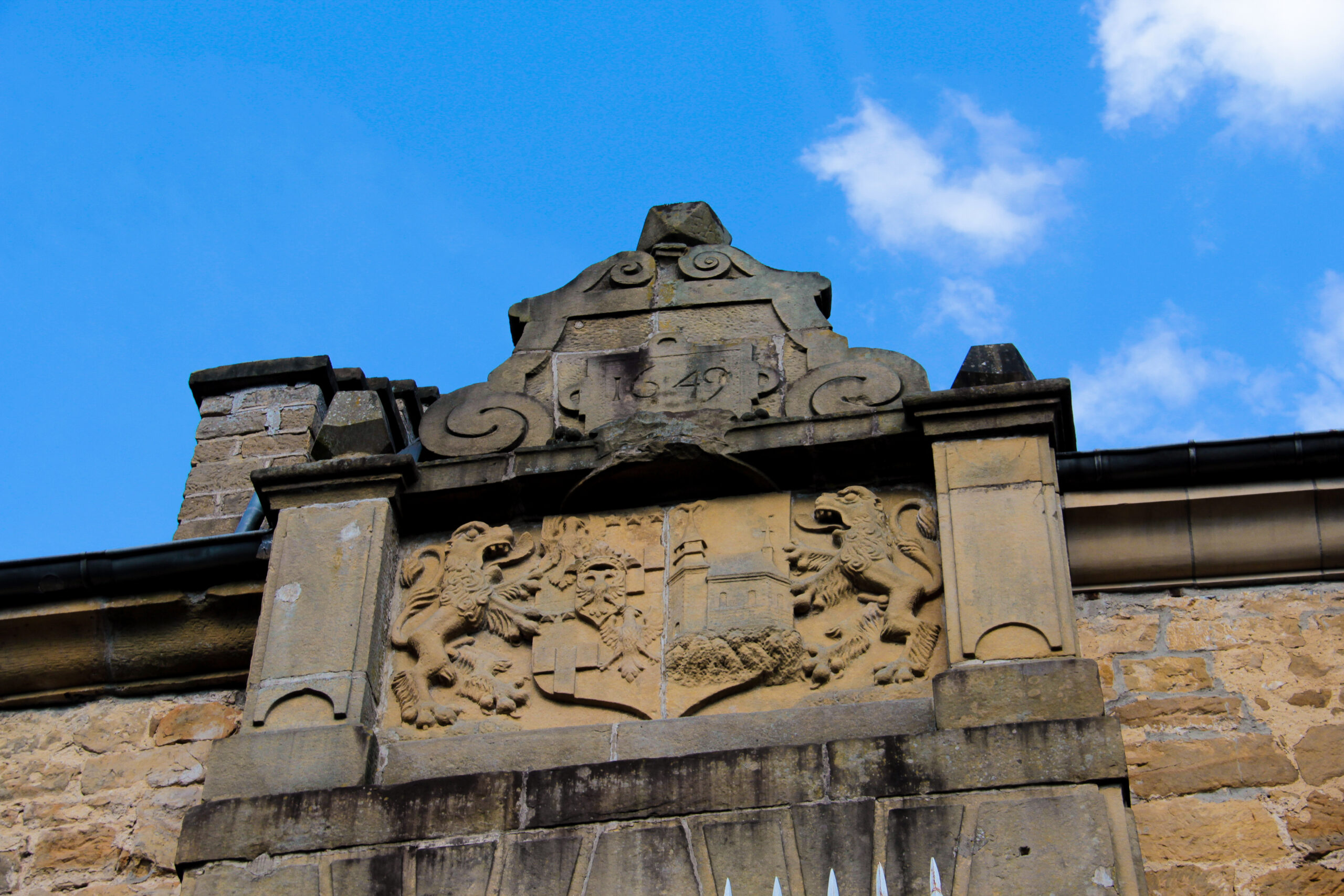
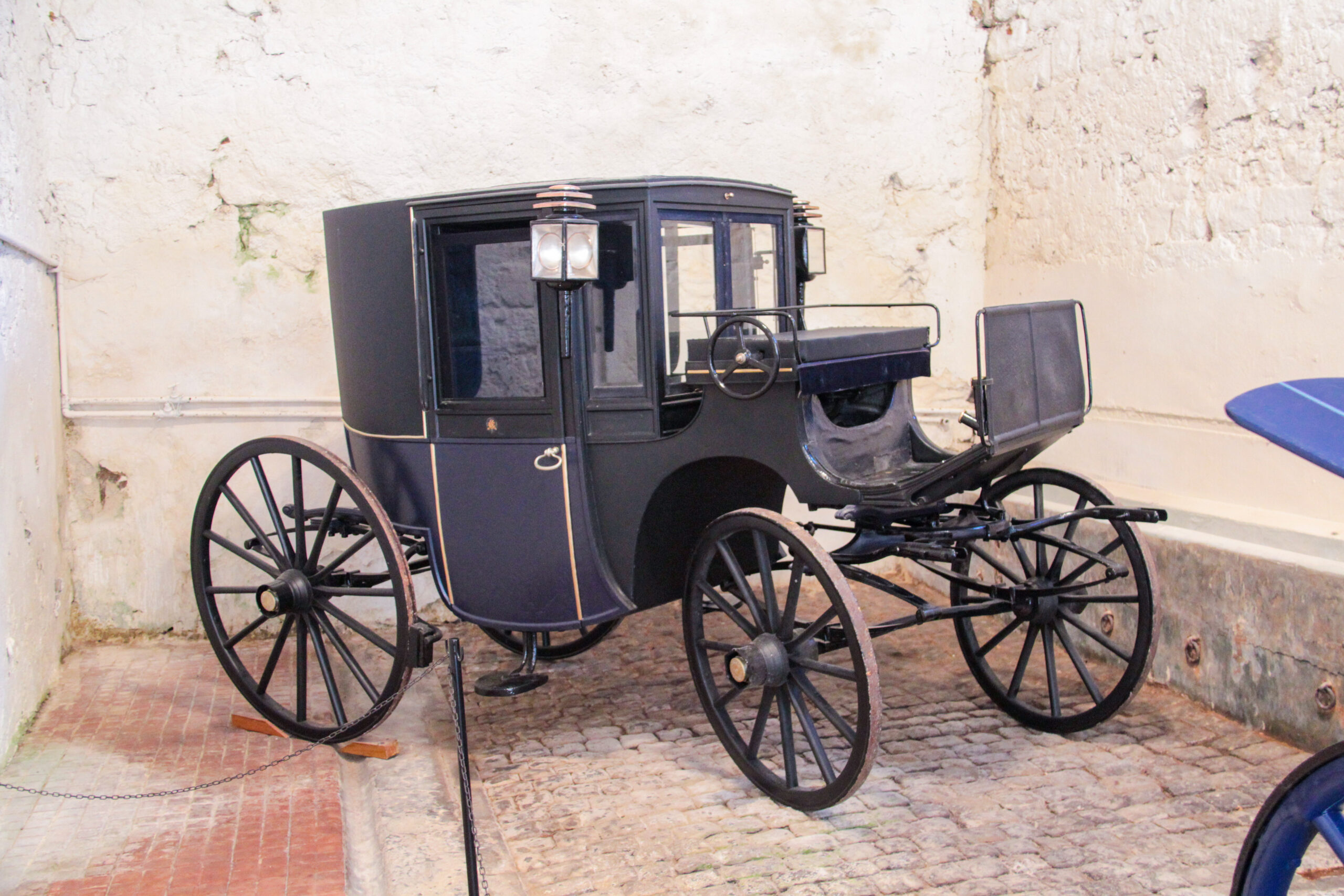
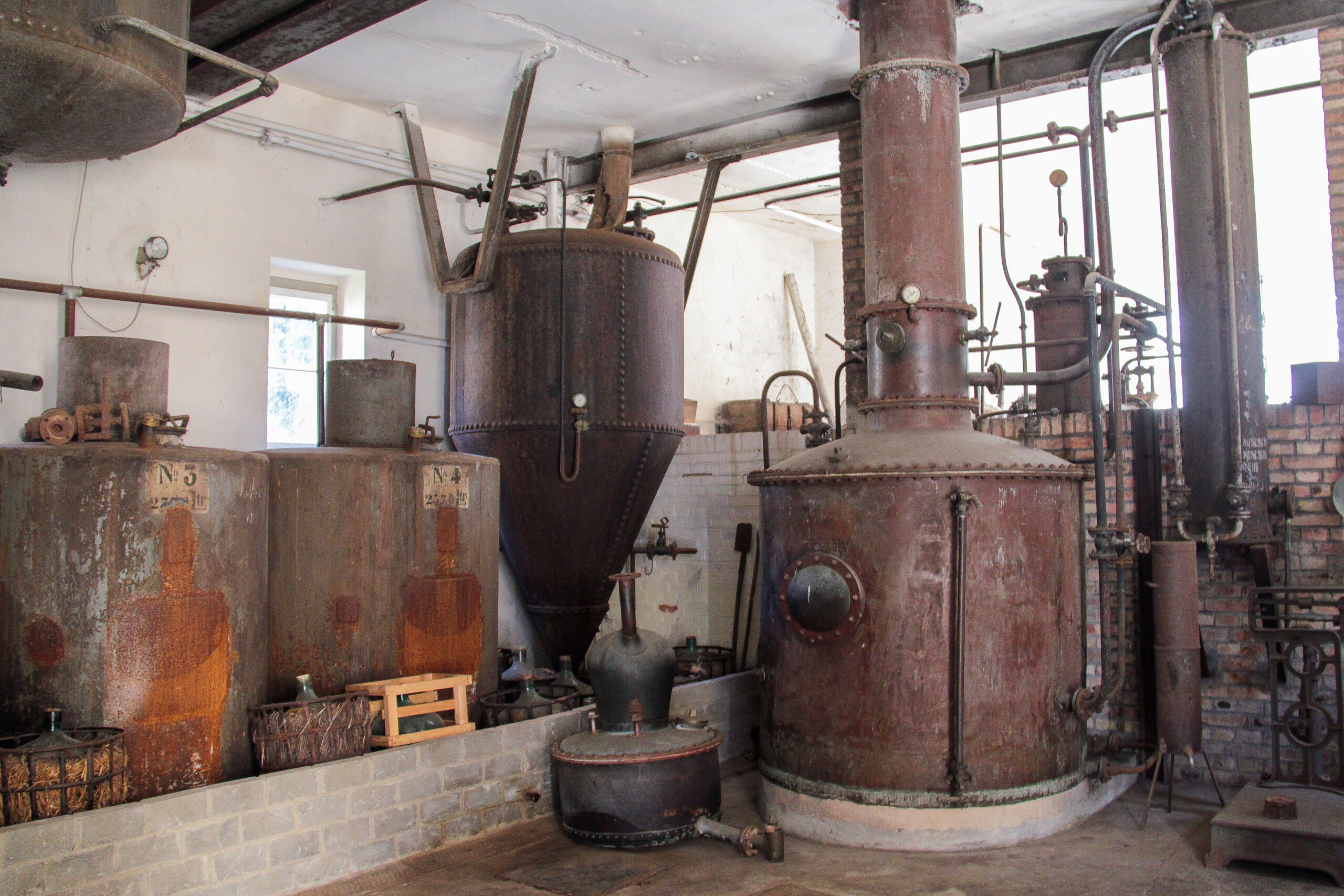
In 1981 she gave the whole property to the State of Luxembourg, but she kept the life estate. And so she was also very involved in the conservation of the castles and also for the whole village of Beaufort.
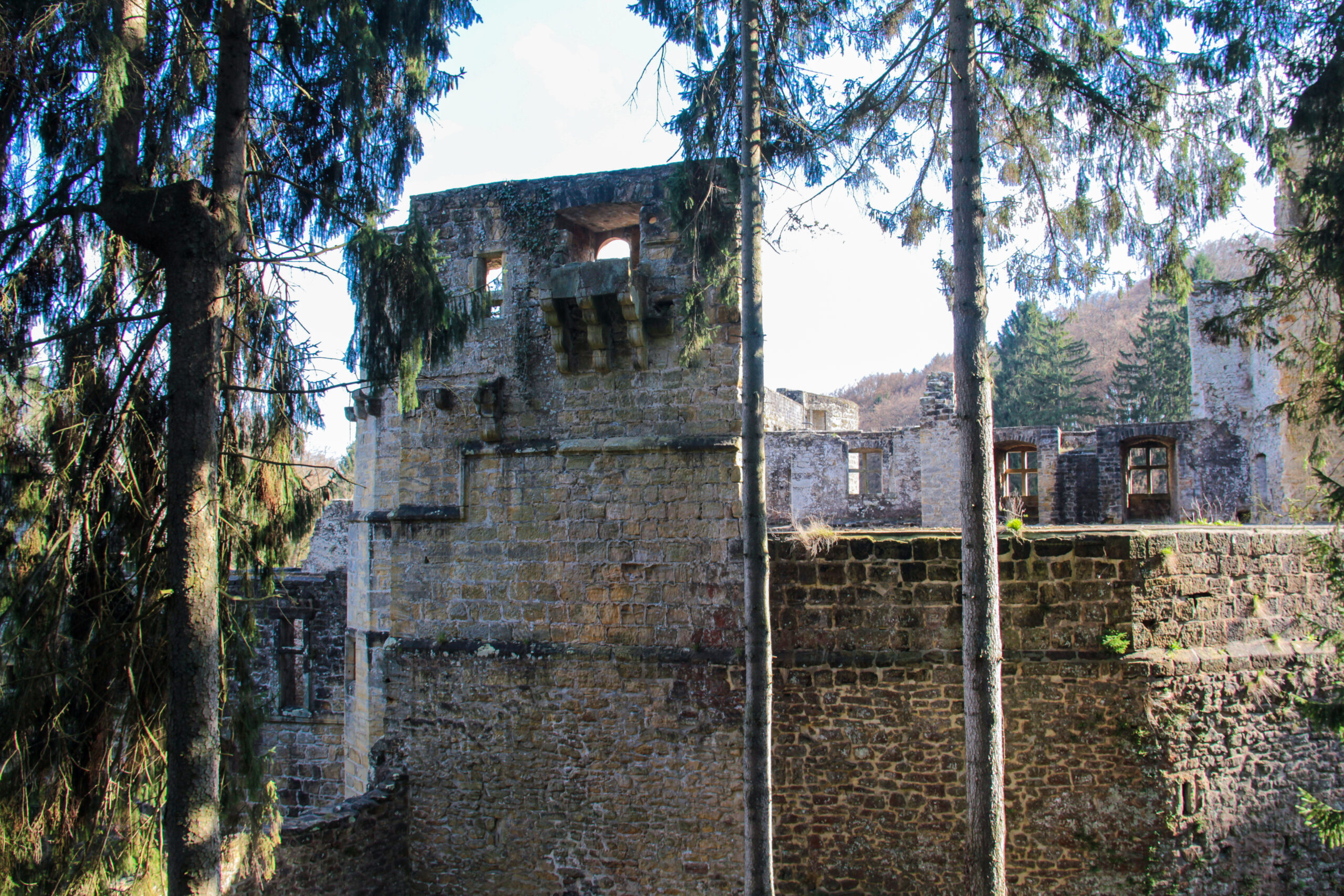
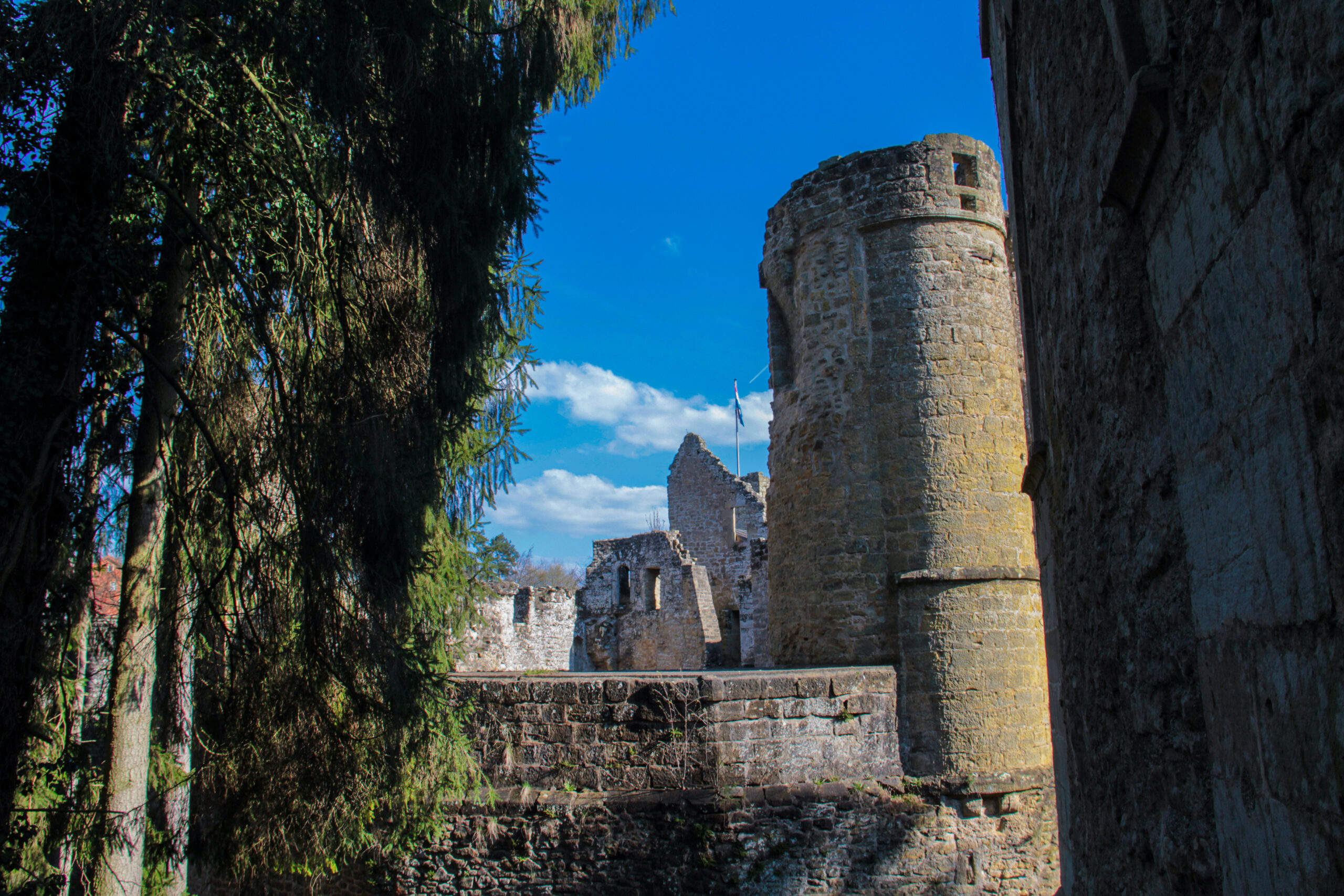
After that she lived alone for 37 years in the renaissance castle of Beaufort, she died at the age of 97 in August 2012. And so it was only in 2012, after the death of Anne-Marie Linckels where the renaissance castle was made public for guided tours.
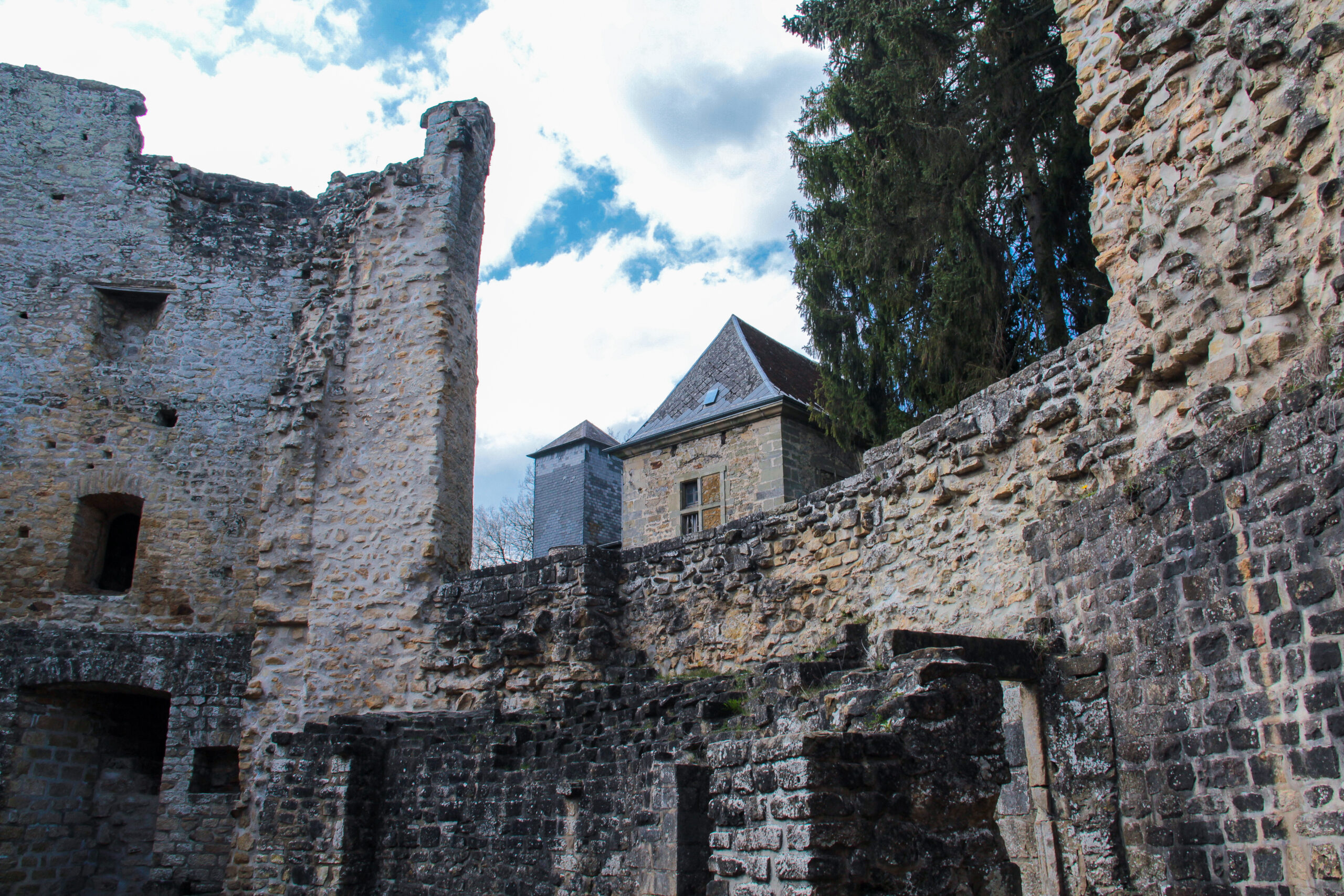
In conclusion I can say that both castles are very worth to visit. The Luxembourgish State let everything like it was in the lifetime of Mrs Linckels.
Read next: Bourscheid Castle in Luxembourg
